CULLEN, EDGAR MONTGOMERY (1843-1922). Colonel, 96th New York Infantry; first lieutenant, 1st Infantry, United States Army. Cullen was born in Brooklyn and attended the Kinderhook Academy. His father was a prominent physician and his mother was the sister of a Brooklyn judge, Alexander McCue. After graduating from Columbia College in 1860 and attending Rensselaer Polytechnic Institute, Edgar Cullen was commissioned into the 1st United States Infantry as a second lieutenant on May 24, 1862. He was promoted to first lieutenant on September 29, 1862, and discharged for promotion two months later. At only 19 years old, he was made colonel of the 96th New York Infantry on December 26, 1862. He was the youngest colonel in the Union Army. Cullen commanded various brigades of the 18th and 24th Corps of the Army of the James, was wounded in the hip during battle, and resigned from service on March 21, 1865. His older brother, Henry Cullen (see), also served in the Civil War.
Civil War Bio Search

After the Civil War, Cullen gave up the study of engineering in favor of the law and was admitted to the bar in 1867. He is listed as a lawyer in the Brooklyn Directory for 1867-1870; he lived at 116 Montague Street. He joined the practice of McCue, Hall & Cullen which in 1870, was reorganized as Hall & Cullen. He served as an assistant district attorney in Kings County from 1872 into 1875. In 1880, he was elected as a Democrat to the Supreme Court in Brooklyn. He is listed as a judge in the Brooklyn Directory for 1880-1882; his home address during those years was 144 Willow Street. Cullen was re-elected in 1894, at which time he was nominated by both the Republicans and the Democrats. In 1893, he issued an injunction that ordered John Y. McKane, the “Czar of Coney Island,” not to interfere with poll watchers; McKane replied, “Injunctions don’t go here.”
Governor Theodore Roosevelt appointed Cullen to the New York Court of Appeals in 1900 and he became chief justice of that court in 1904 when he was elected to a 14-year term. Among the significant cases he heard was the impeachment of New York Governor William Sulzer in 1913. Cullen voted against conviction because the misconduct charged was not attributed to Sulzer’s official conduct as governor and therefore was not a proper basis for impeachment. (Ultimately, despite Cullen’s position, Sulzer was removed from office.) He was often praised for his impartiality and extensive knowledge of the law. Cullen was offered and turned down a cabinet appointment as attorney general by President Grover Cleveland.
Judge Cullen retired from the bench in 1913, when he turned 70, the mandatory age for retirement. Upon his retirement, a banquet honoring him was held at the Waldorf-Astoria Hotel, hosted by the Brooklyn Bar Association and attended by 450 prominent figures in New York’s political and legal circles including the Chief Justice of the United States Supreme Court and former New York Governor Charles Evans Hughes. In his remarks, Cullen praised the legal profession and countered President Woodrow Wilson’s criticism of the judicial system as a hindrance to the expeditious function of the government. His obituary in the Brooklyn Daily Eagle confirmed that one of his aims was to keep politics far away from the judiciary. He continued to practice law with the firm of Cullen & Dykman at 144 Montague Street in Brooklyn.
Cullen was awarded honorary law degrees from Harvard, Columbia and Union Universities. Among the organizations to which he belonged were the Brooklyn Bar Association, the Lawyers’ Club, the Hamilton Club, the Brooklyn Club and the University Club of New York. As per on online biography by the Historical Society of the New York Courts, he spoke about his personal views after his retirement from the bench and advocated for preservation of individual rights, opposed the national prohibition movement and women’s suffrage, arguing that women had no place in the political arena.
As per his obituary in the Brooklyn Daily Eagle, which confirms his Civil War service, Cullen “showed a record of public service exceptional in duration and still more exceptional in the quality of achievement.” That obituary, which commended his character and intellectual gifts, noted that he was earnest in upholding the constitutional rights of citizens but that he had contempt for those “who sought to multiply laws merely for the regulation of human conduct.” He died at his home at 144 Willow Street in Brooklyn. His death was attributed to apoplexy. Cullen, who never married, left his three sisters who survived him a fortune of about $500,000 (the equivalent of $7.7 million in 2020 money). Section 82, lot 1808.

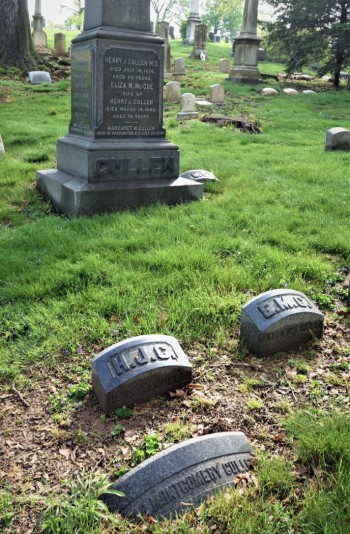
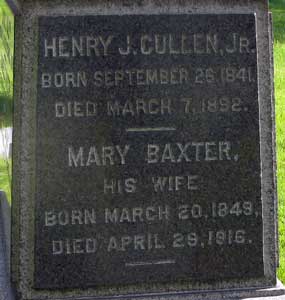
CULLEN, JR., HENRY JAMES (1841-1892). Private, 23rd Regiment, New York State Militia; 31st New York Infantry, Company I. Cullen, a Brooklynite by birth, bore the name of his father, a prominent Brooklyn physician. His younger brother was Edgar M. Cullen (see). He graduated from Union College and became a lawyer in New York City.
As per his obituary in The New York Times, he was in California when the Civil War broke out, hurried home and served as a private for 30 days in the 23rd Regiment. He then re-enlisted as a private on September 26, 1862, and mustered into the 31st New York. His soldier record shows that he was sent to a General Hospital on April 28, 1863. His muster roll indicates that he had been hospitalized and would be “retained till the expiration of his term of service.” His obituary notes that he continued his interest in military affairs and was a colonel on the staff of General John B. Woodward (see) of the New York State Militia.
Cullen is listed as a lawyer in the Brooklyn Directories for 1864, 1865, 1866 and 1867-1870; his practice was at 69 Wall Street and his home address was 116 Montague Street. According to the 1870 and 1880 censuses and the 1870-1873 Brooklyn Directory, he was a lawyer. In 1873, he and General George W. Wingate formed a law firm that bore their names. He was also the Public Administrator in Kings County from 1871 until 1881. The 1880-1882 and 1884-1886 Brooklyn Directories list him as a lawyer at 20 Nassau Street who lived at 23 Pierrepont Street. His obituary notes that he was active in Democratic Party politics as the right-hand man of Hugh McLaughlin, a “boss” in Brooklyn politics, and had a hand in the Party’s nominations, including that of his brother, for many years. Cullen was a member of the Democratic general committee in the First Ward. He was one of the counsels for Tammany Hall in the lawsuits growing out of the election of 1879, took part in the organization of the West Shore Railway, and was a director of James D. Fish’s Marine National Bank.
He described himself on his passport application as 5′ 8″ tall with a square chin, blue eyes, brown hair, Grecian nose, medium forehead and oval face. Among his other affiliations, he was a director of the People’s Trust Company of Brooklyn, the New York and New Jersey Telephone Company, the Brooklyn Heights Railway Company, and the Brooklyn Union Elevated Railway System. He also belonged to the Manhattan Club, the Brooklyn Club, the Turf Club, the Brooklyn Jockey Club. He and his wife were confirmed members of the Grace Protestant Episcopal Church. The Cullens had a collection of Americana in their home valued at $40,000, a large art gallery and an extensive collection of rare old English prints.
An article in the Brooklyn Daily Eagle on February 29, 1892, stated that he was confined at home after several surgical procedures. His law firm, Wingate & Cullen, dissolved before his surgeries. His obituary in The Times reports that he suffered from cancer for two years before his death.
When the Brooklyn Daily Eagle reported his death on March 13, 1892, it noted that he had been a powerful financial figure. At the time of his death, Cullen was director of the People’s Trust Company, the Brooklyn Heights Railroad Company, and the New York and New Jersey Telephone Companies. The article in the Brooklyn Daily Eagle stated that he had previously been interested in gas and was a founder of the Metropolitan Company. His last address was 23 Pierrepont Street in Brooklyn. His death was officially attributed to blood poisoning. He was survived by his widow, Mary Baxter Cullen. His funeral took place at Grace Church in Brooklyn; among the pall bearers were David A. Boody, the mayor of Brooklyn, and Hugh McLaughlin, the aforementioned Democratic Party “boss.” The Times reported that his brother, Edgar, denied a motion to adjourn proceedings of the Supreme Court out of respect to Henry’s passing, noting that “the work of the court was too pressing to be delayed.” Section 185, lot 23699.

CULLUM, GEORGE WASHINGTON (1809-1892). Major general by brevet, and author. Cullum was born in New York City and grew up in Meadville, Pennsylvania, where he later designed the Independent Congregational Church which was built 1835-1836. After he graduated from the United States Military Academy in 1833 (3rd in his class of 43), he joined the engineer corps, and worked on harbor fortifications and government building projects throughout the country in the ensuing years. He rose to second lieutenant on April 20, 1836, and to captain on July 7, 1838. He also served as an instructor at West Point from 1848-1851 and was acting superintendent of the Academy in the summer of 1853 when Robert E. Lee, the superintendent, was on vacation. In 1849, his work, Description Of A System Of Military Bridges, With India-Rubber Pontons, was published; the work, used during the Mexican War, continued to be a standard for such bridges through the Civil War.
Early in the Civil War, he was commissioned brigadier general of volunteers and served as chief of staff to General Henry Halleck when the latter was general-in-chief of the armies. Jack D. Welsh, M.D., in Medical Histories of Union Generals (1996), notes that Cullum left his sick bed in Cairo, Illinois, on March 4, 1862, to go on an expedition to examine the works at Columbus, Kentucky. Cullum directed engineering operations on the western rivers and was chief of engineers during the siege of Corinth, Mississippi. He was also a member of the United States Sanitary Commission and was the superintendent of the United States Military Academy from 1864 to 1866. He was brevetted major general of the army in 1865. The last years of his military service were spent on engineering boards tackling such issues as modifications to the defenses of New York and those of other harbors and rivers in the United States.
After Cullum retired from active service in 1874, he married Elizabeth Schuyler Hamilton, the widow of Major General Henry Halleck (see), whom he had served as chief of staff. She was the granddaughter of Alexander Hamilton and the sister of Schuyler Hamilton (see). Cullum, after leaving the military, pursued scientific and philanthropic interests, serving as president of the Geographical Library Society and vice president of the American Geographical Society from 1877 until his death. In addition, he was a member of the board of managers of the Association for Improving the Condition of the Poor, and was a delegate to the 1881 conferences of the Association for the Reform and Codification of the Law of Nations and the International Geographical Conference. He was a corresponding member of the Massachusetts Historical Society, and a member of the American Historical Society and the American Academy.
An author, who wrote histories of the American Revolution and the War of 1812 (1879), his major work was the Biographical Register of the Officers and Graduates of the United States Military Academy, a monumental tome that was published in its first edition in 1850, a second in 1868, and a final edition of three volumes in 1891. Its entries were based on exhaustive research supplemented by Cullum’s personal knowledge. Those graduates who joined the Confederate Army were given no biographical sketches, and the summaries of their careers omitted all mention of their service during the Civil War. Rather, for each such officer the notation appears, “Joined in the Rebellion of 1861-66 against the United States,” then continues with his or her activities after the Civil War. His will provided for supplements to be issued, and they were published in 1900, 1910, and 1920.
He also left $250,000 of the money he inherited from his wife to West Point for the erection of Cullum Hall, designed by Stanford White, which still stands. Cullum bequeathed $100,000 to the American Geographical Society for construction of a hall and other monies for a medal, in his name, “to those who distinguish themselves by geographical discoveries or in the advancement of geographical science.” Museums, hospitals, libraries and churches were also beneficiaries of his fortune. His last address was 261 Fifth Avenue in New York City. His death was attributed to pneumonia. Section 185, lot 20293.
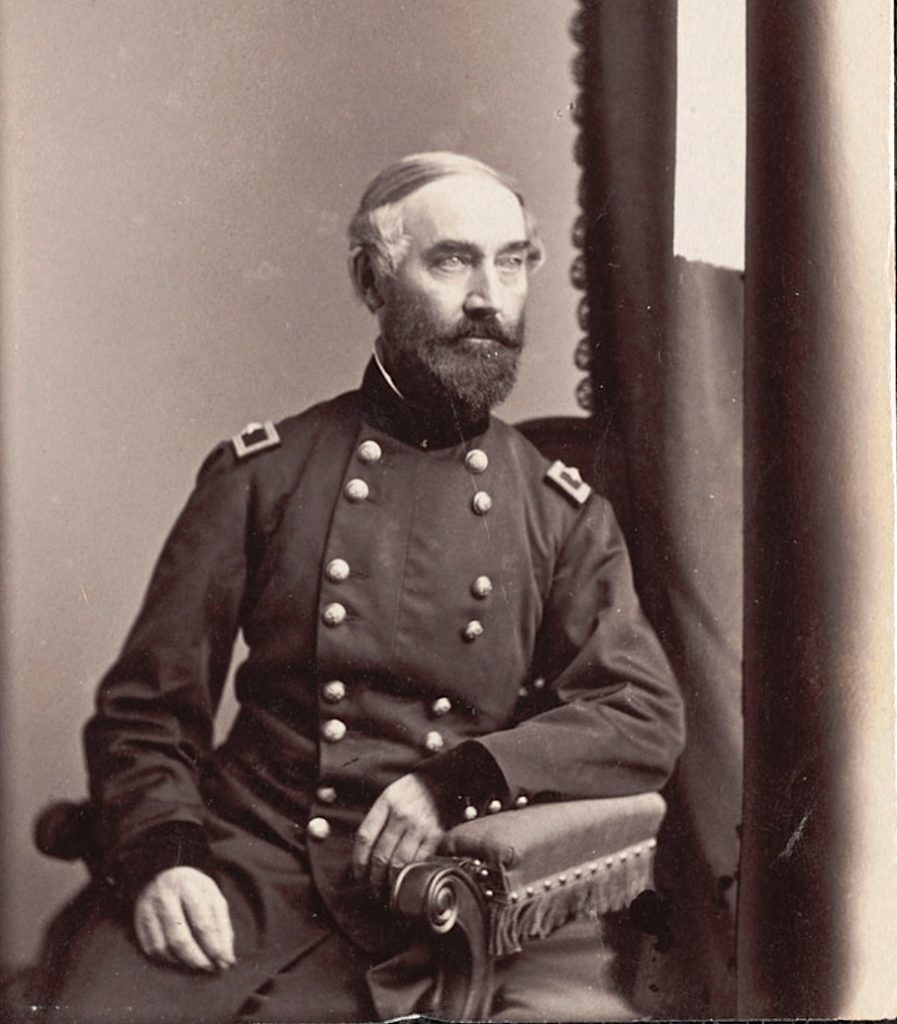

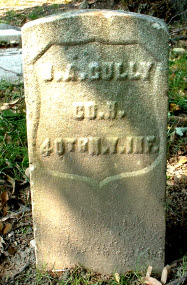
CULLY (or CULLEY), JAMES A. (1847-1892). Drummer, 40th New York Infantry, Company H; wagoner, 74th New York Infantry, Companies H and I. Cully was born in England. After enlisting at Staten Island as a wagoner on August 26, 1861, he mustered into the 74th New York on September 14. At some point during his service, he was reduced to the rank of private, was transferred to Company I on March 1, 1862, and transferred into the 40th New York in the summer of 1864. He re-enlisted on July 27, 1864, as a private, at which time he began service in the 40th, also known as the Mozart Regiment or Constitution Guard. Cully was promoted to drummer on August 3, and mustered out on September 16, 1864, at Petersburg, Virginia. Cully also served in the First Battalion of U.S. Engineers, Company D, and the 6th United States Veterans.
According to the census of 1870, Trow’s NYC Directory of 1877, and the census of 1880, he was an engineer. He applied for an invalid pension in 1892 that was granted, certificate 1,160,101. His last residence was 511 East 81st Street in Manhattan. His death was attributed to Bright’s disease. Shortly after his death in 1892, Ellen Cully applied for and was granted a widow’s pension, certificate 370,703. Section 63, lot 6743.
CULROSS, ALEXANDER (1841-1866). Private, 15th New York Engineers. According to an article in the New York Herald on November 12, 1857, Culross, a New York native, and another youth were apprehended in the back of a store on Greenwich Street in New York City, charged with attempted burglary, and sentenced to two years in the New York Penitentiary. Imprisoned at the time of the 1860 census, he listed his trade as a slate-roofer. He enlisted as a private at New York City on November 24, 1862, and mustered into the 15th Engineers that same day but was not assigned to a company. As per his muster roll, he was a mason by trade who was 5′ 7″ tall with blue eyes, brown hair, and a fair complexion. Other details of his service are not known. He was stabbed to death in Manhattan and last lived at 83 King Street in New York City. Section 115, lot 11193, grave 242.
CULVER, WRIGHT (1842-1872). Private, 1st United States Sharpshooters, Company B; 35th New Jersey Infantry, Company F. A native New Yorker, Culver first served in the Regular Army in the 1st Sharpshooters, also known as Berdan’s Sharpshooters. According to his muster roll, he enlisted at New York City on August 17, 1861, mustered into the 1st Sharpshooters on August 29, and was discharged for disability at Harrison’s Landing, Virginia, on August 5, 1862. That same muster roll lists him as present from November 29, 1861, through June 30, 1862. He re-enlisted as a private on January 17, 1865, mustered into the 35th New Jersey, and deserted on May 22, 1865, at Newark, New Jersey.
According to the 1870 census records, he was employed as a policeman and living with his parents. That same census shows his father, John Culver, was a shipbuilder whose real estate was valued at $12,000, and whose personal worth was $1,200. Among John Culver’s associates was John Jacob Astor. His last residence was 145 South Portland Avenue, Brooklyn. He died of consumption. Section 106, lot 10181.
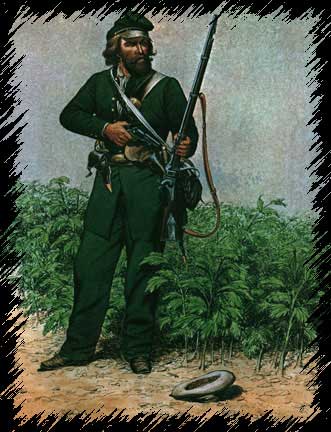
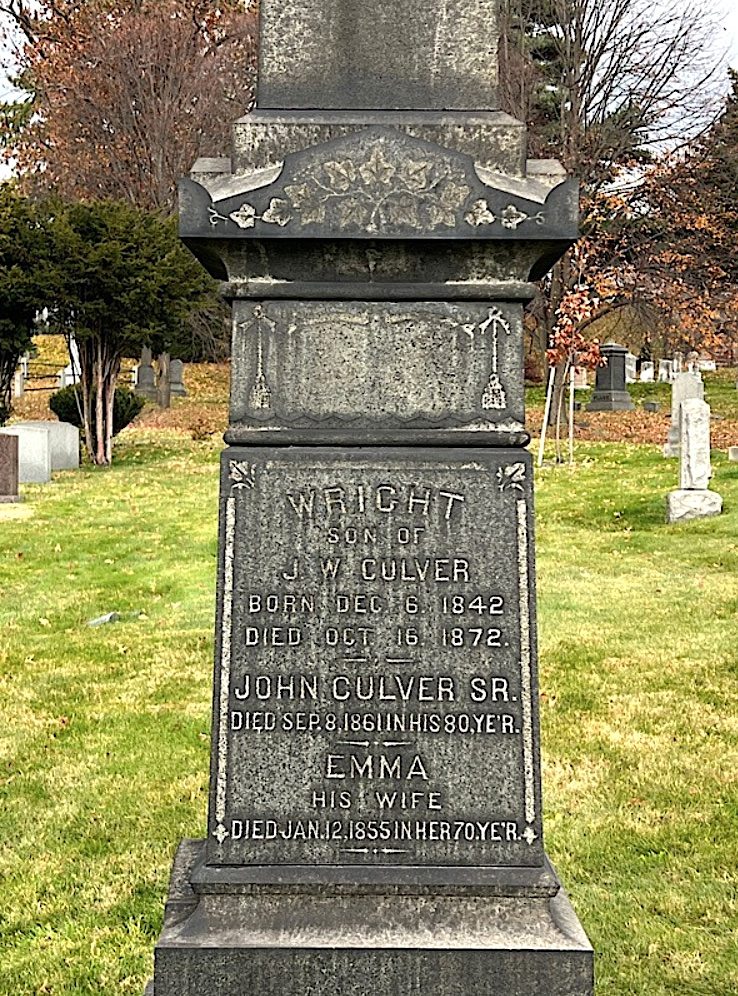
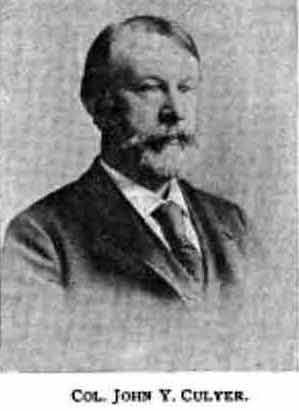
CULYER, JOHN YAPP (1839-1924). Engineer, United States Engineering Department and assistant director of the United States Sanitary Commission. A native of New York City, Culyer was educated in private schools and then studied surveying and engineering at New York University. A civil engineer with an interest in horticulture, he was part of the engineer corps that developed Central Park in Manhattan under the direction of Frederick Law Olmsted, the co-designer of that park (with Calvert Vaux.)
Early in the Civil War, Culyer accompanied Olmsted to Washington, D.C., to aid in the organization of the United States Sanitary Commission, a private organization with a mission of preventing and treating disease and wounded Union soldiers, then served as its assistant director for a year. Subsequently, he joined the United States Engineer Department as an assistant to the chief engineer under General J. G. Barnard working on the defenses south of the Potomac. On the evening of April 14, 1865, he was at Ford’s Theater when President Abraham Lincoln was assassinated. He said of that tragedy that no one “save for the assassin himself, witnessed the shooting.”
After the Civil War, he was the assistant engineer developing Prospect Park in Brooklyn, eventually becoming the chief engineer and superintendent upon Olmsted’s retirement. He was responsible for determining the public uses of the park, an unusual task at that time. While working at Prospect Park, Culyer designed a tree-moving machine that by 1870, had moved and/or imported more than 600 trees. In addition, he developed an extension ladder used for pruning trees, then a controversial procedure. Culyer later became chief engineer and head of Brooklyn’s Park Department and was closely associated with the design for many parks in Brooklyn. In addition, he designed the Flatbush Town Hall (photo below) in 1874, before Flatbush was integrated into the City of Brooklyn in 1894. The 1880-1882 and 1884-1886 Brooklyn Directories list him as the chief engineer and superintendent of parks at 12 City Hall; at that time, he lived on Douglass Street, near Vanderbilt Avenue in Brooklyn. His obituary in the Brooklyn Daily Eagle notes that he was involved in the engineering of the elevated Brighton Beach and Prospect Park Railroads and in the construction and development of Ocean Parkway and the Concourse at Coney Island, Brooklyn.
When Culyer left public service in 1886, he returned to work as a civil engineer and landscape architect. The 1896-1898 Brooklyn Directory lists him as a civil engineer living at the same Douglass Street address. He worked as a landscape architect in projects in many cities including Chicago, New Orleans, Nashville, and Pittsburgh. He designed Washington Park in Albany, New York, Eastside Park in Paterson, New Jersey, and the Masonic Home in Utica, New York.
Remaining active in military affairs, he was an engineer in the New York State National Guard. In 1897, he was the secretary and advisory forester to the Tree Planting Association of New York City, advocates for planting trees on sidewalks in New York City. Among his multiple interests in civic life, he was a member of the Board of Education in Brooklyn for 25 years beginning in 1872, chairman of the committee on art education at the Brooklyn Institute of Arts and Sciences, a promoter of rapid transit in Brooklyn, and member of the Union League Club and the Society of Civil Engineers. His interest in the environment extended to his membership on a committee that studied pollution of the waters in New York State. Culver had a large library and art collection. In addition, he wrote articles on landscape gardening, sanitary reforms and education for leading American journals. He last lived at 132 Maple Avenue Mount Kisco, New York. Section 54, lot 7012, grave 1.

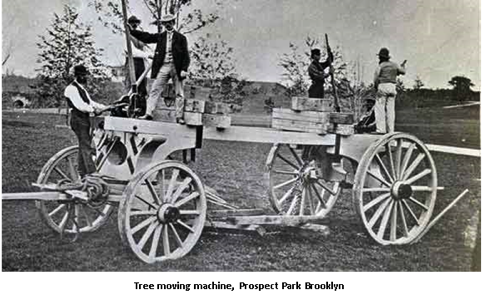

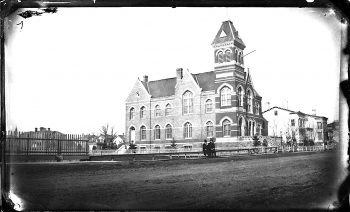
CUMBERLAND, ROBERT (184o-1878). Private, 182nd New York Infantry, Company B. A New York City native, Cumberland enlisted as a private at Suffolk, Virginia, on November 5, 1862, and mustered into the 182nd New York on November 17. On May 24, 1864, he was wounded at the Battle of North Anna River, Virginia, and moved to a Union Army Hospital at Washington, D.C., from which he was discharged on July 15, 1865. At the time of muster out for his company, he was absent and still hospitalized. His last residence was 228 Hoyt Street in Brooklyn. Section 59, lot 15563, grave 72.
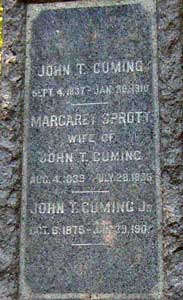
CUMING (or CUMMING), JOHN T. (1837-1910). First lieutenant, 62nd New York Infantry, Company D; corporal, 8th Regiment, New York State Militia, Company E. Born in Ireland, Cuming first served as a corporal in the 8th Regiment in 1861. After the expiration of his term, he re-enlisted as a first sergeant on August 26, 1861, at Camp Cameron, D.C., mustered in on September 1, 1861, and was promoted to second lieutenant on November 17, 1862. According to his muster roll, he was promoted to first lieutenant on October 22, 1863, with rank from August 22, 1862, but did not muster in at that rank. He mustered out on June 29, 1864, at Petersburg, Virginia.
The 1876-1878 New York City Directory lists John T. Cuming as the under-sheriff at the County Court House living at 132 East 93rd Street. As per the census of 1880 and the Philips Business Directory for 1881-1882, Cuming was an attorney; the Phillips’ Business Directory notes that he worked at the Tribune Building. In the early 1880s, he was secretary for the commissioners on the Dock Board, but he was deposed from that position before 1885, at which time he was chairman of the committee on Organization of Tammany Hall in the 23rd Assembly District. The New York City Directory for 1891-1892 reports that he was a lawyer; he still lived at the 93rd Street address. His obituary in The New York Times states that he was an under-sheriff for twenty-five years, then was an employee in the Comptroller’s Office in the Department of Finance for seventeen years. The census of 1900 states that he was a clerk.
A document from the Record and Pension Office of the War Department dated July 31, 1903, verifies that pursuant to an Act of Congress approved on February 24, 1897, Cuming held the rank of first lieutenant as of August 18, 1862. In 1907, his application for a pension was granted, certificate 1,137,705. A resident of Manhattan, he lived at 134 East 93rd Street at the time of his death. A widower, his wife, Margaret Sprott Cuming, died in 1895, and a son, who bore his name, died in 1900 at age twenty-five; he was survived by two daughters. Section 169, lot 15851.
CUNLIFFE, GEORGE D. (1837-1905). Sergeant, 67th New York Infantry, Company A; private, 65th New York Infantry, Company A. A native of Brooklyn, Cunliffe enlisted there as a corporal on May 14, 1861, and mustered into Company A of the 67th New York on June 20. A carpenter by trade, he was 5′ 7″ tall with blue eyes, light hair and a light complexion. His muster roll notes that he was promoted to sergeant on August 30, 1862, and “absent without leave” since May 30, 1863. He was reduced in rank to private on December 24, 1863, before he re-enlisted at Brandy Station, Virginia, and mustered into the same regiment and company that same day. According to his muster roll, he re-enlisted as a “veteran volunteer” in February 1864, and was detailed to Corps Headquarters from June 18, 1864, through August 1864. On September 1, 1864, he was transferred into the 65th New York from which he mustered out on July 17, 1865, at Hall’s Hill, Virginia.
As per the census of 1880, Cunliffe was employed as a sash and blind-maker; the Brooklyn Directory of 1888-1890 identifies him as a carpenter. In 1887, he applied for and received a pension, certificate 554,363. The Veterans Schedule of 1890 confirms his military service and notes that he suffered from rheumatism as a result of exposure during the Civil War. According to his obituary in the Brooklyn Daily Eagle, members of the 67th New York, also known as the First Long Island Volunteers, and the Washington Council of the N. P. U. were invited to attend his funeral. He last lived at 581 East 7th Street in Brooklyn. Cunliffe succumbed to arteriosclerosis. Emma Cunliffe, who is interred with him, applied for and received a widow’s pension in 1906, certificate 613,839. Section 85, lot 3667, grave 136.
CUNNINGHAM, MICHAEL (1818-1907). Private, 61st New York Infantry, Company K. A native of England, he enlisted as a private at New York City on September 18, 1861, and mustered into the 61st on November 8. Cunningham was wounded and taken as a prisoner of war at Malvern Hill, Virginia, on July 1, 1862, and later paroled. On January 28, 1863, he was discharged for disability at Philadelphia, Pennsylvania. On April 17, 1863, his application for an invalid pension was granted under certificate 14,772. He last lived on Putnam Avenue in Brooklyn. The cause of his death was due to shock. Section 194, lot 29394, grave 1.
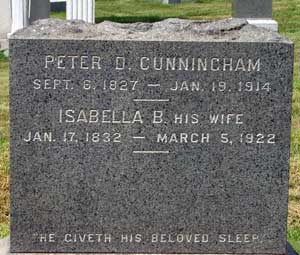
CUNNINGHAM, PETER DEES (1827-1914). Private, 15th New York Engineers, Company A. Originally from Tipperary, Ireland, Cunningham immigrated to the United States in 1852. He enlisted at New York City on May 9, 1861, mustered in at Willets Point, New York, on June 17, and mustered out June 25, 1863, at New York City. His muster roll indicates that he was paid $14.80 by the State of New York (no date given).
In civilian life, he was employed as a bookkeeper, clerk in a dry goods store, and shipping clerk. He might be the Peter D. Cunningham listed as a clerk in the Brooklyn Directories for 1873-1876 and 1890-1892; in the latter directory, he lived at 378A Fifth Avenue. His last residence was 28 South Bergen Place in Freeport, New York. He died of acute dilation of the heart and chronic myocarditis. Section 174, lot 21448, grave 1.
CUNNINGHAM, THOMAS (1828-1884). Private, 84th New York (14th Brooklyn) Infantry, Company B; 5th New York Veteran Infantry, Company I. Cunningham enlisted at Brooklyn on September 9, 1861, mustered into Company B of the 14th Brooklyn, transferred into the 5th New York Veterans on June 3, 1864, and was discharged for disability on April 24, 1865, at David’s Island, New York Harbor. He was living at 183 East 93rd Street in Manhattan at the time of his death. Section 57, lot 15336.
CUNNINGHAM, WILLIAM H. (1840-1924). First class fireman, United States Navy; private, 9th New York Infantry, Company C. A native of New York City, Cunningham was 5′ 10″ tall with a light complexion, brown hair and gray eyes. He enlisted at New York City as a private on May 2, 1861, and mustered into the 9th New York, also known as Hawkins’ Zouaves, two days later. On October 1 of that year he became a prisoner of war when the U.S. Army transport Fanny was engaged in battle in the Pamlico Sound in Hatteras, North Carolina. The eleven men who were taken captive there were manning two artillery pieces on the tug and were part of the first Confederate capture of an armed Union ship in the Civil War. Prior to that incident, the Fanny was used in August 1861 as a balloon carrier from which balloonists ascended from its deck to observe Confederate positions. After Hatteras Inlet was taken, the Fanny was used to supply the Union Army at Chicamacomico, a settlement on the Outer Banks, and was attacked while at anchor there. (The Fanny remained in Pamlico Sound as a Confederate ship until the defeat at Roanoke Island on February 10, 1862, when she was run aground and blown up by her captain who escaped with his crew.) He mustered out at Washington, D.C., on May 21, 1862, as a paroled prisoner. After re-enlisting at Brooklyn as a first class fireman in October or November of 1862, Cunningham served in the United States Navy on the USS North Carolina and Circassian and was discharged at Boston, Massachusetts, in 1864.
In 1904, Cunningham applied for and was awarded a pension from the Navy, certificate 34,515. According to census records, he was a clerk in the post office. He last lived at 481 Fulton Street in Brooklyn. Gertrude Cunningham, his widow, who had been previously married to Joseph Thatford (see), applied for a pension in 1925, application 1,231,659, but no certificate number is available. Section B, lot 8575, grave 471.
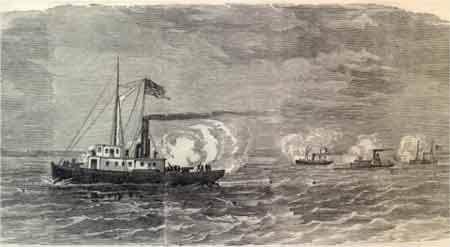

CURRIE (or CURRY), BENNETT (1842-1873). Private, 13th Regiment, New York State National Guard, Company E. A New Yorker by birth, whose first name was his mother’s surname, was a clerk at the time of the 1860 census. His maternal roots can be traced to the early Dutch settlers. Currie enlisted at Brooklyn on May 28, 1862, immediately mustered into the 13th New York (Heavy Artillery), and mustered out after three months on September 12 at Brooklyn. A Freemason, he last lived at 45 Albany Avenue in Brooklyn. Section 56, lot 81.
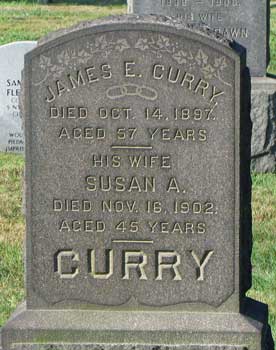
CURRY, JAMES (or JOHN) E. (1840-1897). Private, 84th New York (14th Brooklyn) Infantry Company D; Veteran Reserve Corps; 5th New York Heavy Artillery, Company D. Curry enlisted as a private on April 18, 1861, at Brooklyn, and mustered into the 14th on May 23. On September 17, 1862, he was wounded in action at the Battle of Antietam, Maryland, and transferred into the Veteran Reserve Corps on July 1, 1863. Pursuant to General Order 283, he was transferred to the Invalid Corps as of August 1, where he was borne on the rolls as James E. Curry. He re-enlisted as a private at Goshen, New York, on September 1, 1864, mustered into Company D of the 5th New York Heavy Artillery that same day, and mustered out on June 22, 1865, at Harpers Ferry, West Virginia.
In 1879, Curry’s application for an invalid pension was approved under certificate 187,672. According to the census of 1880, he worked in a hat store; the Brooklyn Directory for 1888-1890 lists him as a hatter. A resident of Brooklyn, he belonged to the 14th Veterans’ Association and the International Order of Odd Fellows. His last residence was at 578 Atlantic Avenue. Curry died of heart disease. In 1898, Susan Curry, who was interred with him, applied for and received a widow’s pension in 1898, certificate 476,695. Section 59, lot 743, grave 33.
CURRY (or CURREY), JOSEPH G. (1842-1876). Corporal, 79th New York Infantry, Company G. After enlisting as a private at New York City on May 13, 1861, Curry, a New York native, mustered into the 79th on May 28. He was promoted to corporal on April 13, 1863, and, according to his muster roll, was hospitalized at Camp Dennison, Ohio, on June 30, 1863. He mustered out at New York City on May 31, 1864.
The Brooklyn Directory for 1868 lists Curry as a printer; at that time, he lived at 152 Johnson Street. As per the census of 1870, he worked for a printer. The 1870-1873 Brooklyn Directory lists him as a stenographer who lived at 174 Johnson Street. An article in the Daily Tribune dated May 30, 1873, Flowers on the Soldiers’ Graves, described the preparations for decorating the graves in cemeteries in the New York area that day. Under the auspices of the G.A.R., monies were raised for flower pots to decorate each Civil War veteran’s grave. Since a national holiday was just instituted, schools and businesses were closed and commemorative events scheduled. Joseph Curry was mentioned as one of the color bearers who followed the flag of the 79th New York, known familiarly as the Highlanders, memorializing veterans who were interred at a cemetery in Yonkers, New York. Members of Brooklyn’s G.A.R. Stephen Thatford Post #3, Wadsworth Post #4, William Rankin Post #10, and Charles Griffin Post #84 along with Edgar A. Kimball Post #100 were assigned to do the honors at Green-Wood.
As per an article in the Brooklyn Daily Eagle, dated June 23, 1875, Curry was a complainant in a lawsuit when another man, also named Joseph Curry, mistakenly received his check for $342.50, due to a postman’s error. The man who received the check in this mix-up, a laborer, allegedly could not read; his wife forged Joseph G. Curry’s signature, and had it cashed. At that time, Curry was employed as a stenographer of the United States Court. He last lived at 340½ Union Street in Brooklyn. The cause of his death was consumption. He was survived by his widow, Elizabeth Blake Curry. Section 151, lot 16877.
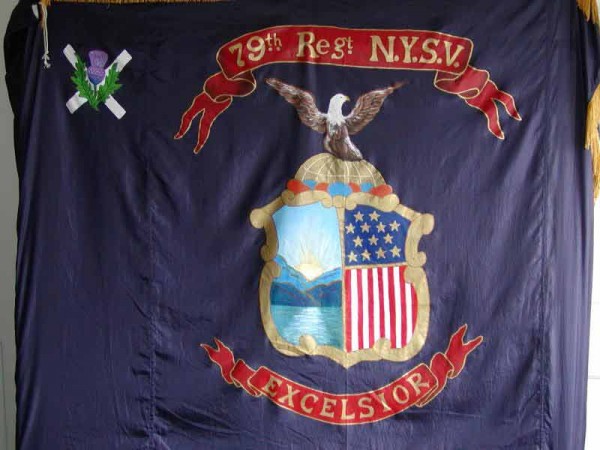
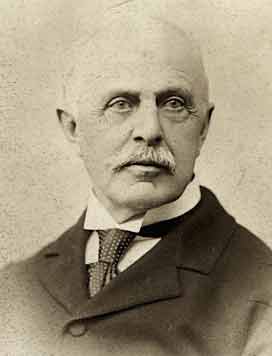
CURTIS (or CURTISS), CHARLES BOYD (1827-1905). Captain, 57th New York Infantry, Companies K and A. Born in Penn Yan, New York, to a family whose ancestry could be traced to early New England stock, he was graduated from Hamilton College in 1848. He then studied law in Chicago, Illinois, where he was admitted to the bar in 1850. On his application for a passport in 1855, he described himself as 5′ 4½” tall with gray eyes, chestnut hair, a high forehead, short chin, long face and florid complexion.
During the Civil War, Curtis enlisted as a first lieutenant at New York City on August 28, 1861, and was commissioned into Company K of the 57th New York three days later. He was promoted to captain on February 3, 1862, effective upon his transfer that day to Company A. Major Alford Chapman (see) of the 57th commended him for special mention in his field report describing the actions at Antietam, Maryland, on September 17, 1862. After his discharge on June 8, 1863, he resided in New York City where he was a commission merchant.
On August 23, 1876, he married Isabel Douglass, the daughter of a wealthy businessman and anthropologist, who was 21 years his junior and with whom he had four children; his first wife, Harriet Augusta Adams Curtis, had died in 1867. At the time of his marriage, he was no longer practicing law and was a commission merchant. As per the census of 1880, he was a retired lawyer. According to his obituary in the Evening Post, Curtis, whose expertise in art was recognized internationally, was the author of several books on art including the Catalogue of the Works of Velasquez and Murillo (1883), an extensive work, and Rembrandt’s Etchings (1889). His application for an invalid pension was granted in 1890, certificate 605,499. His diary of his European travels in 1895 was published that year; a copy is now at the New York Public Library. He was a member of the Union League Club and the American Yacht Club. At the end of his life, he became interested in genealogy and attempted to trace his American ancestors. Curtis last lived at 9 East 54th Street in Manhattan, a mansion originally owned by his in-laws with whom he had lived; he also had a home in Rye, New York, called Locust Wood, where he originally lived with his in-laws. Curtis died after a prostatectomy.
An article in the Brooklyn Daily Eagle on December 18, 1906, stated that his wife unveiled a beautiful 20′ monument topped by a Celtic-style cross, in tribute to him, made by Tiffany Studios from granite in the style of those in English churchyards (below). One of the inscriptions on the monument read, “Lord, thou hast been our refuge from one generation to another.” Section 125, lot 31938, grave 25.
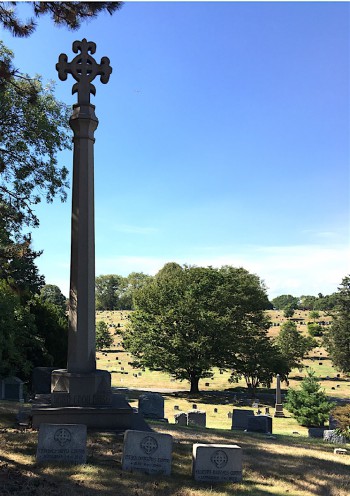
CURTIS, CHARLES J. (1839-1910). First sergeant, 20th Massachusetts Infantry, Companies D and A. A native of England, Curtis immigrated to the United States in 1858. He was a welder and resident of Canton, Massachusetts, when he enlisted as a private and mustered into the 20th Massachusetts on July 18, 1861, at Camp Massasoit in Readville, Massachusetts. Curtis and the 20th fought at the Battle of Ball’s Bluff, Virginia, on October 21, 1861, which did not go well for the Union forces. His muster rolls for October 31, 1861, and December 31, 1861, note that he was missing since that battle. In fact, he had been captured. Imprisoned at Richmond, Virginia, as of October 24, 1861, he was paroled at James River, Virginia, on February 20, 1862. His muster roll for February 28, 1862, states that he was an exchanged prisoner and absent on furlough. As per his muster roll, Curtis was wounded at the Battle of Nelson’s Farm, Virginia, on June 30, 1862. He was wounded on December 13, 1862, at Fredericksburg, Virginia (as a corporal), and wounded in the leg on July 3, 1863, at Gettysburg, Pennsylvania (as a sergeant). Curtis was listed as absent on the muster rolls from July through December 1863, because of his wounds at Gettysburg.
Curtis was discharged for re-enlistment as a veteran volunteer on March 12, 1864. His papers at muster-out indicate that he was due a bounty of $100, with a first installment of $60, for two years of service. He re-enlisted as a sergeant on March 12, 1864, although another certificate says first lieutenant, and was due the second installment of $40 of his bounty as per his April 1864 muster roll. At that time, he was 5′ 6½” tall with blue eyes, black hair and a dark complexion. Curtis was wounded in the arm on May 18, 1864, at Spotsylvania Court House, Virginia, and hospitalized at Fredericksburg, Virginia, then at Wolf Street Hospital in Alexandria, Virginia, and then in a hospital in New York Harbor. His muster roll for June 1864 reports that he was absent due to wounds and was still owed the second portion of his bounty. His muster rolls for July through February 1865 indicate that he was absent and due the second and third installments of his bounty.
However, Curtis was listed as a deserter at Boston, Massachusetts, on February 27, 1865, after being arrested there on February 13; the cost of the arrest was $30. That report states that he left the General Hospital at Brattleboro on September 27, 1864, to receive a commission as a first lieutenant; the adjutant general of Massachusetts stated that he declined the commission and had been at large since he left the hospital. Curtis wrote that he was discharged from a hospital in New York Harbor in August 1864 with an order for the chief mustering officer in Boston for placement as a first lieutenant in the United States service; Curtis claims that he was told that the order was sent to his regiment. He then went home to South Canton, Massachusetts, and then voluntarily turned himself into the Boston police on February 17 at which time he was sent to the Military Prison at Fort Independence, Boston, and then at Prince Street Military Prison in Alexandria, Virginia.
Curtis soon returned to his company, was promoted to first sergeant and transferred to Company A in March 1865; his muster roll of April 1865 notes that he was present and was paid for his service in July and August 1864. His muster roll for June 1865 notes that he received an Enfield rifle musket and equipments; the charge was $6.00. He mustered out with his company near Munson’s Hill, Virginia, on July 16, 1865; his papers noted that he was still due the $40 of his bounty.
The 1875-1876 New York City Directory lists Curtis as a welder; during those years, he lived at 515 West 45th Street. According to the census of 1880, he was a steam and gas pipe welder; Trow’s Directory for 1883 and the 1882-1883 New York City Directory also list him as a welder. The Veterans Schedule of 1890 confirms his military service and notes that he was wounded in the left arm during his service. He is listed as a pipe-maker living at 286 Ninth Avenue in the 1891-1892 New York City Directory. In 1893, he applied for and received an invalid pension under certificate 865,592. He last lived at 307 West 15th Street in Manhattan. Shortly after his death in 1910, Elizabeth Curtis was granted a widow’s pension, certificate 702,352. Section 135, lot 14964, grave 808.
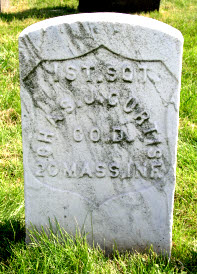
CURTIS, FREDERICK R. (1836-1863). Assistant paymaster, United States Navy. Curtis served in the Navy as an acting assistant paymaster from October 19, 1861-July 12, 1862, when he was named assistant paymaster. He died at Fortress Monroe, Virginia, on April 25, 1863, a “casualty,” and was interred at Green-Wood on May 1, 1863. Section 105, lot 5560.
CURTIS, GEORGE WILLIAM (1833-1920). Captain, 71st Regiment, New York State National Guard, Company G. Curtis, who was born in New York City, was a clerk at the time of the 1860 census. After enlisting at New York City as a first lieutenant on April 19, 1861, Curtis was commissioned into Company G of the 71st New York State National Guard on May 3, and mustered out on July 31 of that year. When his unit was reactivated in 1862, he was promoted to captain and commissioned into the same company on May 28, and mustered out at New York City on September 2.
According to the census of 1870, he was a chandler, a seller of supplies and equipment for ships; the census of 1880 states that he was a ship broker. He might be the George W. Curtis listed as a merchant/broker at 89 South Street and living in Brooklyn in the 1882-1883 and 1885-1886 New York City Directories. The Veterans Schedule for 1890 verifies his military service. Curtis was granted an invalid pension in 1894, certificate 1,061,991. The censuses of 1900, 1910, and 1920 show that he was living in Brooklyn but no occupation is listed. His brother, Robert Curtis (see), also served during the Civil War. He last lived at 346A Decatur Street in Brooklyn. The cause of death was cardiac arrest. Section 59, lot 1538.
CURTIS, MARK (1838-1874). Corporal, 139th New York Infantry, Company D. Of English origin, he was a stone cutter according to the 1860 census. Curtis enlisted as a private at Brooklyn on August 28, 1862, and mustered into the 139th New York on September 9. On March 7, 1863, he was promoted to corporal of his company and served with that rank until he mustered out on June 19, 1865, at Richmond, Virginia. He died of typhoid fever at Saint Peters Hospital in Brooklyn. His wife, Kate Curtis, applied for and received a widow’s pension in 1891, certificate 307,328. Section 127, lot 3139, grave 258.

CURTIS, ROBERT (1844-1928). Private, 56th Regiment, New York State National Guard. Company H. Born in New York City, he was a brother of George W. Curtis (see). In 1864, Curtis enlisted as a private on August 2 and served in the 56th Regiment for 100 days, mustering out on November 6 of that year. According to the Brooklyn Directory of 1888-1890, he was a painter. The Veterans Schedule of 1890 confirms his military service. His application for a pension in 1908 was granted, certificate 1,150,017. As per the census of 1910, he was an engineer; the census of 1920 shows that he had retired. An inscription on his gravestone notes his membership in the Grand Army of the Republic. He last lived at 595 East 34th Street in Brooklyn. Curtis died of cardiac arrest. Section 172, lot 13884.
CURTIS, WILLIAM ARGALL (1838-1865). Hospital steward, United States Army; private, 84th New York (14th Brooklyn) Infantry, Company D. A native of New York City, he was a clerk before he enlisted at Brooklyn on April 18, 1861, and mustered into the 14th on May 23. Curtis was detached to the Brigade Headquarters on August 1, 1861, but was on the muster roll as of April 30, 1863. Although listed as a deserter on August 13, 1863, he was in fact hospitalized and the desertion notation was removed. He was promoted to hospital steward on April 2, 1864, effective upon his transfer that day to the United States Army’s Field and Staff. He died from diarrhea at Washington, D.C., but his family lived at 79 Lawrence Street in Brooklyn. As per his obituary in The New York Times, members of the 14th were invited to his funeral. Section 69, lot 6641.

CUSIC (or CUSICK), JAMES FRANKLYN (or FRANKLIN) (1843-1918). Private, Maine Coast Guards Infantry, Company A. Born in Maine, although some records say he was originally from St. George, New Brunswick, Cusic was living in Franklin, Maine, when he enlisted on March 18, 1864, and mustered into the Maine Coast Guards Infantry on that day. He was a farmer who was 5′ 7½” with blue eyes, black hair and a dark complexion. Cusic mustered out on May 25, 1865, at Portland, Maine.
Remaining interested in military affairs, Cusic was active in the Abel Smith Post #435 of the G.A.R. The 1882-1883 Brooklyn Directory identifies him as a painter; during those years, he lived at 11 Fleet Place. In 1892, he applied for and was granted an invalid pension, certificate 948,483. According to the censuses of 1900 and 1910, he was living in Brooklyn where he was a laborer at the Navy Yard. Cusic’s obituary in the Brooklyn Standard Union confirms his Civil War service. His last residence was 1450 36th Street in Brooklyn. He died from pneumonia. In 1918, Henrietta Cusic, who is interred with him, applied for and received a widow’s pension, certificate 864,970. In addition to his widow, he was survived by two daughters and four sons. Section 166, lot 25685.
CUTHBERT, HENRY J. (1834-1888). Private, 11th Massachusetts Infantry, Company A; 11th Massachusetts Battalion, Company A. Although he is listed as a Massachusetts native on some documents, that is incorrect; his enlistment record notes that he was born in Nova Scotia, Canada. Cuthbert was a clerk when he enlisted as a private in the 11th Massachusetts on August 14, 1863. At that time, he was 5′ 6″ tall with blue eyes, brown hair and a sandy complexion; he was listed on his muster roll as a substitute for George W. Learnard, Jr., a Boston lawyer. In his official certificate as a substitute, Cuthbert swore his allegiance to the United States and promised to serve for three years, unless officially discharged earlier. On June 13, 1864, he was transferred into Company A of the 11th Massachusetts Battalion, was on detached service at Division Headquarters until August 31, 1864, and was detailed with the band at Division Headquarters through April 30, 1865. His detail at headquarters was continued as of June 21, 1865. He mustered out at Camp Miegs in Readville, Massachusetts, on July 14, 1865. At muster out, he was paid a bounty of $25 with another $75 due. According to his pension record, Cuthbert also served in the Navy aboard the USS Lehigh and the USS Sabine.
According to the census of 1880, he was employed as a bookkeeper. He may be the Henry J. Cuthbert who is listed as a manager in the 1884-1885 Brooklyn Directory; that man lived on 14th Street in Brooklyn. Although his name is listed on the Veterans Schedule of 1890, there is a notation that his wife was a widow. His last residence was 436 10th Street in Brooklyn. The cause of his death was cerebral apoplexy. In 1890, Georgianna Cuthbert, who is interred with him, applied for and was granted a widow’s pension, certificate 408,595. Section 4, lot 21316, grave 19.
CUTTER (or CUTLER), GEORGE ROGERS (1840-1891). Surgeon, 127th New York Infantry. An eye and ear specialist, Cutter was a native of New York City and a graduate of the College of Physicians and Surgeons there. He enlisted as a surgeon at New York City on July 23, 1862, and was commissioned into the Field and Staff of the 127th New York, known familiarly as the “Monitors,” on September 10, 1862. During his service, he was away from his regiment and listed as absent in May 1863 when he was an acting medical director and subsequently, when he was detached to a field hospital at Deveaux’s Neck, South Carolina, in October 1864. He was also absent as of April 19, 1865, when he was assistant to the chief medical officer of the District of South Carolina. He mustered out with his company on June 30, 1865, at Charleston, South Carolina.
After the Civil War, Cutter remained in Charleston where he practiced medicine until 1868 at which time he went to Heidelberg, Germany, where he studied for four years. Upon returning to the United States, he became associated with the New York Eye and Ear Infirmary. He co-wrote, with Heinrich Frey, The Microscope and Microscopical Technology: A Textbook for Physicians and Students (1876). He is listed as a surgeon at 228 East 12th Street in the 1876-1878 New York City Directory. A prominent doctor and scientist, he is the author of A Dictionary of German Terms Used in Medicine, published in 1879. The 1881-1882 Phillips’ Business Directory and the 1891-1892 New York City Directory list him as a physician at 312 Second Avenue. The Veterans Schedule of 1890 confirms his service and notes that his rank was major. However, this appears not to have been the case. Frederick Phisterer, in his classic New York in the War of the Rebellion, 1861-1865, makes no mention of Cutter having that rank.
According to his obituary in The New York Times, he was a member and past president of the Ophthalmological Society of New York, a consultant to St. Catharine’s Hospital, and a member of the Kings County Medical Society. His last residence was 473 Bedford Avenue in Brooklyn. He died from pneumonia. His widow, Esther P. Cutter, survived him. Section 27, lot 4026.
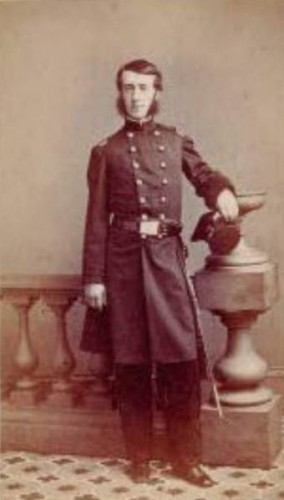
CUTTER, JAMES BIRD (1840-1876). Assistant surgeon, United States Army. A student at the 33rd Street Medical College in Manhattan, he was awarded a medical degree from the Long-Island College Hospital. The 1857-1862 Brooklyn Directory lists him as a surgeon whose practice was on Henry Street. In 1860, he won Wood’s $50 first prize for the best anatomical subject at Bellevue Hospital. During the Civil War, Cutter served as an acting assistant surgeon of the United States Army in Virginia and at McDougall General Hospital at Fort Schuyler, New York, in 1863.
Immediately after the War, Cutter lived in Newark, New Jersey, where he was a respected surgeon. His life, however, was marked by controversy. An article in the New-York Daily Tribune on May 6, 1871, states that he was indicted in Newark, charged with performing an abortion, and allegedly absconded. He may be the James B. Cutter who is listed as a physician in the 1875-1876 New York City Directory; that man lived at 80 East 10th Street. He last resided in East Lyme, Connecticut. Section 67, lot 3789.
CUTTER (or CUTLER), JOHN S. (1838-1863). Captain, 176th New York Infantry, Company C. A native New Yorker, Cutter was admitted to the New York State Bar in 1859. During the Civil War, he enlisted at New York City on December 18, 1862, was immediately commissioned into the 176th New York as a captain, and was killed in action on June 23, 1863, at Brashear City, Louisiana. His muster roll indicates that he was also borne on the rolls as John S. Cutler. According to his obituary in The New York Times, which was dated July 23, 1863, “Capt. Cutter was a young lawyer of this City, of fine promise, and a gentleman of great personal worth. He fell while gallantly leading his men for a third charge upon the enemy.” On April 13, 1864, he was interred at Green-Wood. Section 180, lot 13487.

CUTTING, JAMES DeWOLF (or DeWITT, D’WOLF) (1839-1885). Captain and aide-de-camp, United States Volunteers; second lieutenant, 2nd New York Veteran Cavalry, Company A; private, 7th Regiment, New York State Militia, Company F. A native of Westchester, New York, Cutting was employed as a clerk according to the census of 1860. He enrolled at New York City on April 17, 1861, and mustered into the 7th Regiment to serve for 30 days on April 26. He re-enlisted as a second lieutenant on December 9 of that year, was commissioned into the 2nd Regiment of Cavalry (Veterans) that day, and was discharged for promotion on May 22, 1862. Cutting was commissioned into the United States Volunteers the next day as a captain and additional aide-de-camp at Warrenton, Virginia. Writing from Washington, D.C., on November 6, 1862, Major General Irvin McDowell, commanding officer, thanked Cutting and others, “My staff were always faithful, zealous, active, and fearless in the discharge of their duties, which were incessant and exhausting, and under which many of them broke down in health, some being still unable to leave their beds.” Cutting tendered his resignation on December 8, 1864.
As per the census of 1870, the 1876 Trow’s Directory for New York City and the 1877 New York City Directory, he was employed as a broker; the last named directory notes that he lived at 141 Fifth Avenue. At the time of the census of 1880, he was a stock broker living in Manhattan at the same Fifth Avenue address. The son of a wealthy broker (his father’s real estate was valued at $40,000 in 1870), his family’s estate, the Bayard Cutting Arboretum, a New York State Park, is on the south shore of Long Island in Great River, New York. It stretches across almost 700 acres. His last residence was in Pleasantville, New York. His death was attributed to general paresis; at the time of his death, he was involved in a proceeding contesting a will. Section 23, lot 6612.
CUTTING, WILLIAM (1832-1897). Brigadier general, colonel and lieutenant colonel by brevet; major and aide-de-camp, United States Volunteers. Born in New York City, Cutting’s grandfather and father were both lawyers. His grandfather was a principal owner of the Brooklyn Steamboat Company, a ferry service between Brooklyn and Manhattan. His father represented his district in Congress in 1853-1855 and was opposed to the pro-slavery Democrats during the debates over the admission of Kansas and Nebraska to the Union. Cutting was educated at Columbia University and Harvard Law School. He was 5′ 9½” tall with black hair, black eyes, dark complexion, large mouth, prominent nose, large mouth, long face, and dark complexion.
An officer in United States Volunteers, Cutting enlisted at New York City as a captain on November 16, 1861, and was immediately commissioned into the United States Volunteers Quartermaster’s Department where he served until his promotion to major and aide-de-camp on July 22, 1862. He served as aide-de-camp on the staff of Major General Ambrose E. Burnside. On August 1, 1864, he was brevetted to lieutenant colonel for his actions at the Battles of the Wilderness and Spotsylvania, Virginia. That same day, he was also brevetted to colonel for his bravery at Knoxville, Tennessee. Major General John G. Parke recommended Cutting for a promotion by brevet for his “conspicuous and gallant conduct in the actions of the Wilderness, Spotsylvania, Bethesda Church, and before Petersburg, Virginia,” in his report of November 19, 1864. The praises were reiterated by Major General Burnside in his report of November 26, 1864, who commended Cutting and thanked him and other officers for efforts in Virginia during the engagements across the Chickahominy and the James and at Petersburg from June 12-July 30. He wrote, “Through the entire campaign they have shown a noble devotion to the service, answered all calls made upon them, and endured fatigue, exposure, and privations with cheerfulness and alacrity.” On March 13, 1865, he was brevetted to brigadier general “for gallant and meritorious services at the Battle of Fredericksburg, Virginia.” Cutting resigned on May 8, 1865.
Cutting returned to the practice of law after the Civil War. He is listed as a lawyer in th 1882-1883 New York City Directory; during those years, he lived at 8 East 23rd Street. An article in The New York Times on July 23, 1887, reported that Cutting, the executor of his father’s estate, misappropriated almost $2,000,000 in funds. “…This sum,” says the report, “was withdrawn from the productive funds of the estate from time to time and applied to his own use without right and in violation of his duty as Executor, and he is chargeable therefore with legal interest, …” The article went on to say, “…the said William Cutting was guilty of misappropriation and gross neglect and disregard of duty in management of said estate….” It was determined that Cutting was not entitled to be paid any commission or compensation as executor and that his relatives would not pursue any criminal charges after the fair shares were appropriated in a timely manner. According to his obituary in The New York Times, he was the founder of the Knickerbocker Club, established in 1871, for the City’s most privileged gentlemen. He last lived at 1250 Broadway in Manhattan. His death was due to enteritis. Section 23, lot 6609.

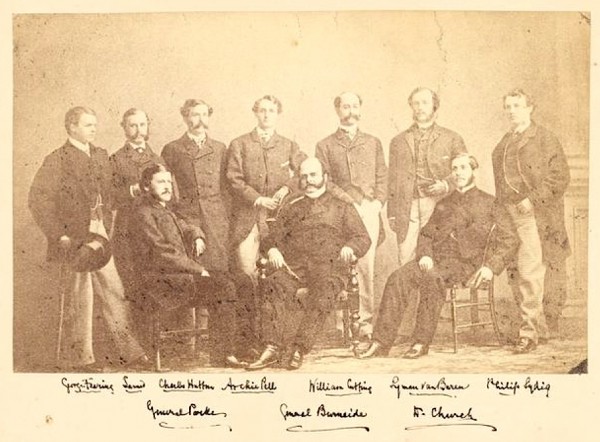
CUVILLIER, LEON (or LOUIS, L.L.) (1832-1866). Captain, 38th New York Infantry, Company I; first lieutenant and adjutant, 55th New York Infantry; private, 7th Regiment, New York State Militia, Company F. Originally from France, Cuvillier first served in the 7th Regiment for 30 days in 1861. He then re-enlisted at Staten Island as an adjutant on August 26, 1861, and was commissioned two days later into the Field and Staff of the 55th New York with a promotion to first lieutenant and adjutant. On May 31, 1862, he was wounded at Fair Oaks, Virginia. An article in the New York Herald on June 8, 1862, notes that soldiers were brought to Boston on the Daniel Webster, a hospital ship of the Sanitary Commission, and would return to their regiments after treatment. Cuvillier was among those treated; he was wounded twice in the left arm and once in the side, and was in “comfortable” condition. On December 23, 1862, he transferred into the Field and Staff of the 38th New York as an adjutant, upon consolidation of units. His promotion to captain on February 19, 1863, became effective upon his transfer to Company I on April 3. He mustered out on June 22, 1863, at East New York. He last resided at 258 South 6th Street in Jersey City, New Jersey. His death was attributed to consumption. In 1880, his wife’s application for a widow’s pension was granted, certificate 237,801. A minor’s pension was also granted at that time, certificate 238,725. Section 115, lot 4196, grave 63.
DAGGETT, JOSEPH NATHANIEL (1839-1902). First lieutenant and quartermaster, 43rd United States Colored Infantry (USCT), Company C; private 10th Vermont Infantry, Company K. Born in Coventry, Vermont, Daggett resided there when he enlisted as a private on August 6, 1862, and mustered into Company K of the 10th Vermont Infantry on September 1. He was promoted to corporal on January 4, 1863, and was discharged for promotion on March 19, 1864, the same day that he was commissioned into Company C of the 43rd USCT as a first lieutenant. Daggett became a quartermaster on April 1, 1864, and transferred into the Field and Staff. He mustered out on October 20, 1865.
As per an article about his death in The New York Times on March 27, 1902, Daggett was the superintendent of the New York store of retailer John Wanamaker. That store’s employees adopted resolutions of appreciation attesting to his abilities as a skillful executive and sympathetic friend, free of malice, who demonstrated kindness to all employees in the company. Among the tributes was the acknowledgement that “he was a lovable man, helpful and kindly, whose character and daily walk endeared him to all with whom he came in contact.” Another of the resolutions, which was included in his obituary in the New York Herald read, “It mattered not what duties taxed his physical and emotional strength, his time was always given, his ear always open, when he was appealed to even by the humblest.” His death was also announced in the Brooklyn Daily Eagle and the New York Tribune, which also quoted from the resolutions of condolence. Daggett worked for the John Wanamaker store for eighteen years in both the Philadelphia, Pennsylvania, and New York City establishments. He last lived at 170 Washington Park in Brooklyn. His death was attributed to heart disease. Philadelphia newspapers were asked to print notices of his death. Shortly after his death in 1902, Emma Dickinson Daggett applied for and received a widow’s pension, certificate 705,412. He was also survived by two children. Section 205, lot 31066, grave 1.

DAHLGREN, CHARLES GUSTAVUS ULRICH (1811-1888). Brigadier general, 3rd Brigade and 7th Brigade, Mississippi Infantry, Confederate States of America. Originally interred at Green-Wood temporarily, Dahlgren was removed and re-interred at City Cemetery, in Natchez, Mississippi. Dahlgren, who was born in Philadelphia, Pennsylvania, moved to Natchez, Mississippi, where he became an official of the Bank of the United States. He owned mansions overlooking the Mississippi River; one, now named Dunleith, which still stands, was where he lived with his first wife, Mary Routh, who died in 1858 and is interred with him. In 1859, he married Mary Edgar.
After the ordinance of secession passed in Mississippi at the onset of the Civil War, he spent his personal funds to raise and equip two regiments of state- sponsored volunteers, the 3rd Brigade Infantry and the 7th Brigade Infantry, both part of the Army of the Mississippi, and led those brigades as its brigadier general. When Jefferson Davis, the president of the Confederate States of America, moved both brigades from state service to the Provisional Army of the Confederate States of America in 1863, it precipitated a dispute between the two that lasted throughout their lifetimes. Davis removed Dahlgren from command and retired him from his leadership of the 3rd and 7th Mississippi Brigades.
It is noteworthy that Charles Dahlgren’s family played a prominent role during the Civil War exemplifying how relatives were torn apart by the conflict. His older brother, Rear Admiral John A. Dahlgren, headed the Ordnance Department of the United States Navy and in 1863, commanded the South Atlantic Blockading Squadron. The inventor of numerous guns and cannons that helped the Union, he achieved renown when he created a cast iron muzzle loading cannon known as the “Dahlgren gun.” John Dahlgren’s son, Colonel Ulrich Dahlgren, United States Cavalry, was killed in action in 1864 on a raid to assassinate President Jefferson Davis and the Confederate Cabinet in Richmond, Virginia. Charles Dahlgren’s older brother, William Dahlgren, was a member of a United States diplomatic mission to the United Kingdom and was part of a mission sent by President Lincoln to spy on Confederate purchasing agents there.
After the Civil War, he lost his plantation and fortune, and moved to New Orleans, Louisiana, where he practiced law. Subsequently, he lived in Nashville, Tennessee, in 1870, then moved to Winchester, Virginia, and settled in New York City in 1876, where he was a lawyer and public accountant. He is likely the Charles G. Dahlgren who is listed as an accountant in the 1873-1876 Brooklyn Directory; that man lived at 355 Atlantic Avenue. He last lived at 530 Decatur Street in Brooklyn. According to a newspaper report, he had a simple funeral attended only by close friends and family. Reverend Dr. Van Dyke said of him, “…Few men have met and passed through such trials and scenes of excitement and vicissitude and still preserved a steady courage. He was a man of indomitable will….” In 2002, Herschel Gower wrote the biography, Charles Dahlgren of Natchez: The Civil War and Dynastic Decline.
DAILY (or DALEY, DALLY), WILLIAM (1831-1912). Private, 127th New York Infantry, Company A. Daily was born in New York City. The census of 1860 notes that he lived in New York City, was married, and was employed as a brush dealer. After enlisting as a private at New York City on August 18, 1862, he mustered into Company A of the 127th New York. As per his muster roll, Daily was in the sash and blind trade. He was 5′ 5½” tall with blue eyes, light hair and a light complexion. His muster roll also notes that he was sick in Camp Beaufort, South Carolina, in December 1864 and February 1865. He mustered out with his company on June 30, 1865, at Charleston, South Carolina.
In the 1876-1878 Brooklyn Directory, Daily is listed as a carpenter who was living at 1596 Third Avenue. The 1880 census reports that Daily was single, lived in New York City with his sister and brother-in-law and their family, and worked as a carpenter. In 1890, his application for an invalid pension was approved, certificate 643,100. As per the census of 1900, he had been re-married for sixteen years, lived in Brooklyn, and was a carpenter; he still lived in Brooklyn at the time of the census of 1910 and indicated that he could read and write. He last lived at 273 Kosciusko Street in Brooklyn. His death was attributed to nephritis. Shortly after his death in 1912, Sarah Daily applied for and received a widow’s pension, certificate 748,283. Section 87, lot 1715, grave 303.
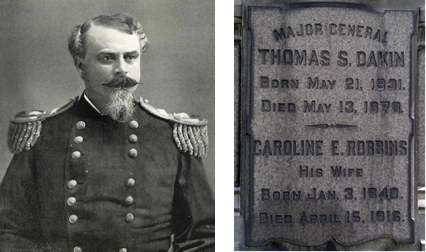
DAKIN, THOMAS SPENCER (1831-1878). Captain, 13th Regiment, New York State National Guard, Company H. Born in Orange County, New York, he worked on his father’s farm in New Paltz, New York, until he was seventeen. He then walked 75 miles to New York City, and began his new life as an office boy. Within ten years he had established the firm of Thomas S. Dakin & Co., commission agents; he is listed as a merchant in the 1857-1862 Brooklyn Directory. In 1859, he became a private in Company G of the 13th Regiment’s Militia, then known as the Brooklyn City Guard. He was a leader of the Putnam Baseball Club of Brooklyn, was listed in the 1860 edition of Beadle’s Dime Base-Ball Player as second vice president of the Baseball Association, and was among the first to propose rules to make baseball a national game. Serving three months in 1862, he enlisted at Brooklyn and was commissioned on May 28, into Company H of the 13th Regiment, which he helped organize, and mustered out on September 12 at Brooklyn. He was elected captain of the 13th, and served on General Philip Crooke’s staff during the Virginia Campaign. His obituary in the Brooklyn Daily Eagle notes that he fought at the Battle of Suffolk Court House, Virginia.
Dakin is listed as a merchant in the 1862 and 1863 Brooklyn Directories, having entered the wholesale oil business in 1861, first under the name of Barnett & Dakin. The 1868 Brooklyn Directory lists him as a partner of Dakin & Gulick in the petroleum business on Maiden Lane; he then lived at 336 Pearl Street. He retired from business in 1870.
Remaining active in military affairs, Dakin was elected major of the 13th Regiment in 1868, became lieutenant colonel in 1869, and was appointed a major general of the militia by Governor Samuel Tilden in 1875. In addition, he was a prominent member of the United States Rifle Team, leading it to numerous international triumphs. His obituary in The New York Times reports that his first international competition was between Irish and American teams in 1874, one year after he learned the sport, and that he worked hard to secure a position on the team of six from about 50 competitors. An article about the team and its members appeared in the New York Herald on June 29, 1875. That article, which confirmed Dakin’s Civil War service, described him as tall, strong, high-chested, and upright with a well-shaped head and a sharp, penetrating eye that goes to its mark straight as a bolt from his rifle. He had a short mustache and a beard and his hair was tinged with some gray. He served as a director of the National Rifle Association. Elected a member of the Legion of Honor of France, he was one of the most popular men in Brooklyn. In 1876, he ran for Congress as a Democrat but was defeated. G.A.R. Post #206 was named in his honor; he was a member of the William Rankin Post #10. Also, he was a member of the 13th Regiment Veteran Association, the Amateur Rifle Club of which he was president in 1876, chairman of the of the Sharpshooters’ Association of the North America and belonged to the Brooklyn Schützen Corps, a German-American shooting club founded in 1858.
The night before his death, he attended the famed Plymouth Church in Brooklyn to hear the sermon of Chaplain Beecher (see) with members of the 13th Regiment and complained that he “had a headache, the first in his life, and that his eyes seemed dim.” As per his obituary in The New York Times, his funeral took place at the Church of the Redeemer on Fourth Avenue and Pacific Street. Prior to the service, his body lay in state in the rotunda of Brooklyn’s City Hall which was draped in mourning. Resolutions of regret were passed by the Brooklyn Board of Alderman, the Veteran Association of the 13th Regiment, and the National Rifle Association.
Dakin’s service at Green-Wood was spectacular. As the sun set and drummers beat the cadence, policemen, then military officers in full dress uniform on horseback, entered the cemetery. An honor guard accompanied the caisson which carried Dakin’s body, dressed in uniform. It was the same caisson that had been used at the funeral of General Winfield Scott. Regiments marched in accompanying a riderless horse, with boots in the stirrups turned heels first, and crowds thronged the cemetery as the 13th Regiment formed in battle line on the hillside above the receiving vault. A private burial service for the family took place a few days later. His last residence was 376 Pearl Street in Brooklyn. His death was attributed to heart disease. He was survived by Caroline Robbins Dakin; his first wife, Maria Clayton Scholes Dakin died in 1858. Section 54, lot 6953.
DALE, CHARLES G. (1831-1891). Assistant engineer, United States Revenue Cutter Service; United States Navy. A native of New York State, Dale enlisted on September 15, 1858, at New York City, and joined the Revenue Cutter Service. In 1861, by Presidential Order, he was attached to the United States Navy as an assistant engineer for the duration of the Civil War. In a letter written by his wife, she attested that he served on the Harriet Lane and was in Charleston Harbor in South Carolina. She wrote that he also served on the Miami, a gunboat, and the Stevens, a steamer, during the hostilities. He returned to the Revenue Cutter Service in 1866, where he was promoted to chief engineer and served until his retirement on August 22, 1874. Among the places where he served were Key West, Florida; Bronx, New York; Boston, Massachusetts; and New Berne, North Carolina.
Dale is listed as an engineer in the 1867-1870 and 1873-1876 Brooklyn Directories; during those years, he lived at 175 Java Street. The 1880 census listed his occupation as engineer. His last residence was 2073 Bathgate Avenue in the Bronx. Cordelia Dale, who is interred with him, applied for and received a pension from the Navy, certificate 8,579. Section 73, lot 6028.
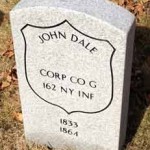
DALE, JOHN (1833-1864). Corporal, 162nd New York Infantry, Company G. Dale enlisted at New York City as a private on September 3, 1862, and mustered into the 162nd Infantry, known as the Metropolitan Guards, on October 18, 1862. Rising to corporal on June 14, 1863, he died of consumption on May 12, 1864, at New York City. Section 115, lot 13536 (Soldiers’ Lot), grave 85.
DALEY, PATRICK (1830-1901). Private, 132nd New York Infantry, Company I. A native of Ireland, he enlisted and mustered into the 132nd New York on September 3, 1862, only to desert on September 23. He last lived at 54 Huntington Street in Brooklyn. Daley died from nephritis. Section 137, lot 30129, grave 2.
DALLING, WILLIAM (1841-1895). Corporal, 2nd New York Heavy Artillery, Company B. Born in New York State, Dalling enlisted as a private at New York City on August 11, 1862, and mustered into the 2nd New York Heavy Artillery. The next year, on August 1, 1863, he was promoted to corporal of his company, was reduced in rank to private on February 15, 1864, and mustered out of service on May 15, 1865, at Washington, D.C. His last residence was 223 West 35th Street in Manhattan. Dalling died of heart disease. His wife, Kate, received a widow’s pension in 1914, certificate 422,933. Section 135, lot 27263, grave 811.
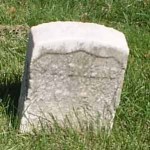
DALRYMPLE, JOHN (1827-1872). Captain, 83rd New York Infantry, Company A. Born in Scotland, he enlisted as a first lieutenant at New York City on May 27, 1861. He was commissioned into Company A of 83rd New York the same day, was promoted to captain on August 6 of that year, and was discharged on May 22, 1862. He last resided at 219 West 11th Street, New York City. The cause of death was pneumonia. Section 163, lot 14875.
DALSTON, WILLIAM BELL (1834-1914). Private, 12th Regiment, New York State Militia, Company E. Originally from Carlisle, England, Dalston immigrated to the United States in December 1855, aboard the passenger ship Robert Kelly. As per the vessel’s manifest, he was employed at that time as a lithographer. During the Civil War, he enlisted in 1861 and served as a private for three months with the 12th Regiment.
In 1880, Dalston was living in Atlanta, Georgia, where he worked as a bookseller. In 1881, he published a lithograph, Chronological Chart of the United States-Dedicated to the People of the United States by the Publisher, considered to be of museum quality. The 1884 Brooklyn Directory lists his trade as agent. An article in the Long Island Traveler on February 6, 1885, states that Dalston purchased farmland in Southold, New York. A subsequent article in the Long Island Traveler on September 28, 1888, mentions that Dalston was the agent for a “beautifully bound book” by R. W. Thompson, History of the Tariff. In 1891, he applied for and was granted a pension, certificate 739,623. The 1900 census indicates that he was working as a bookkeeper; the 1902 Brooklyn Directory shows that he was a book dealer at 612 Jefferson Avenue in Brooklyn. According to the 1910 census, he was dealing and publishing medical books. His last residence was 612 Jefferson Avenue in Brooklyn. He succumbed to carcinoma of the stomach. In 1914, Frederica Moadinger Dalston, who is interred with him, received a widow’s pension, certificate 78,357. Section 22, lot 9109.
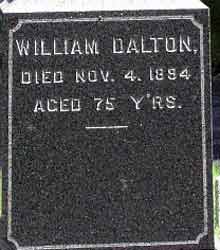
DALTON, WILLIAM (1819-1894). Private, 15th New York Engineers, Company F; 18th Veteran Reserve Corps, Company E. Of English origin and employed as a buckle-coverer according to the census of 1860, Dalton enlisted at New York City as a private on May 9, 1861, and mustered into the 15th New York Engineers on June 17, and was discharged for disability at Fairfax Courthouse, Virginia, on March 29, 1862. He apparently re-enlisted on an unknown date, and was injured in the right hand at Fairfax, Virginia, in September 1862. As per his pension record, application 853,225, in 1890, he also served in the 18th Veteran Reserve Corps, Company E, but no details are known about that service.
The 1862 Brooklyn Directory lists him as a maker of harness buckles. A harness-maker by trade, his first admittance to the Soldiers’ and Sailors’ Home in Bath, New York, started on March 15, 1879 and lasted until June 27 of that year. He was readmitted on February 15, 1888, discharged on September 16, 1890, and returned on December 22, 1890, remaining there until his death. His military service is confirmed by the Veterans Schedule of 1890. He died at the Soldiers’ Home from senility and acute debility. Section 58, lot 25742, grave 9.
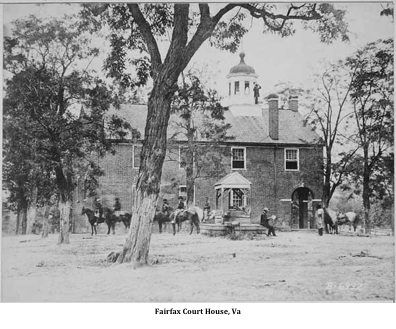
DALY, CHARLES P. (1816-1899). Judge. Born in New York City, his parents were recently arrived Irish immigrants. When his father died, he dropped out of school and worked for several years as a clerk and a sailor. He returned to New York and apprenticed to a mechanic, studied at night, then entered a law office. He was admitted to the bar, elected to the state legislature, and was soon appointed a judge on the Court of Common Pleas. He served on that bench for the next forty-two years, and from 1858 until his retirement in 1885, he was its chief justice. He presided at the famous trial of the Astor Place Rioters in 1849 and charged the jury in a way that, contrary to popular sentiment, interpreted the law vigorously against the rioters.
During the Civil War, Daly staunchly supported the Union and was often consulted on legal matters by President Lincoln. Supreme Court Chief Justice Chase, after the seizure of the Confederate commissioners to England, Mason and Slidell, and the crisis which ensued, asked Daly for his opinion as to whether or not they had to be released. Daly replied that the law required that they go free, and Secretary Seward ordered their release a few days later.
He was president of the American Geographical Society for thirty-four years. He wrote extensively on such topics as maps, naturalization, judicial tribunals, Jews in North America, and banking. Section 183, lot 19789.

DANA, WILLIAM STARR (1843-1890). Acting ensign, United States Navy. Born in New York City, Dana joined the Navy on October 25, 1859, as an acting midshipman, then attended the Naval Academy 1859-1863. After becoming an acting ensign on October 1, 1863, he was assigned to the frigate Niagara in the West Gulf Blockading Squadron. As per Ronald S. Coddington in Faces of War: Redemption at Mobile Bay (February 14, 2015), Dana, along with six other officers on the Niagara, were reported for leaving their watch before being properly relieved. Secretary of the Navy Gideon Welles admonished the young men on March 22, 1864, and rejected their plea of innocence. Dana was sent back to the Naval Academy briefly and then reported to Admiral David Farragut on the Hartford on July 1. He soon proved himself on July 5 when he took part in the fiery destruction of the Ivanhoe, a Confederate blade-runner, during a nighttime raid; that action by Dana was praised by Farragut: “The entire conduct of the expedition was marked by a promptness and energy which shows what might be expected of such officers and men on similar occasions.”
Admiral Farragut then gave Dana control of the Hartford’s Powder Division, a thirteen-man crew that distributed ammunition for the warship’s 24 guns, which he commanded at the Battle of Mobile Bay, Alabama, on August 5, 1864. As the Hartford was shelled, there was great carnage on the vessel. Dana recalled, “Fragments of the shell flew over my head and I was covered by the brains and blood of the man next to me.” He remembered, “All over the decks you would see, here a leg, there an arm or head, and on some parts of the deck blood was nearly an inch deep. I went to bed, thanked God for my escape and felt very faint and weak from the sights I had gone through during the day.”A single shot killed three and wounded two of his crew. In all, at Mobile Bay, 51 of the 310 men on the Hartford were killed or wounded; there were 10 casualties in Dana’s crew. A few weeks later, Dana fell ill and was sent home to recuperate.
During 1865-1866, he was in the Pacific Squadron on the Lancaster. Dana was promoted to master on May 10, 1866. Continuing his career in the Navy, he was assigned to the Aroostook, the Shenandoah, and the Ashuelot in the Asiatic Squadron from 1867 to1869, was promoted to lieutenant on February 21, 1867, lieutenant commander on March 12, 1868, and commander on September 14, 1881. He commanded the USS Ashuelot in the Asiatic squadron from 1881-1890. He retired from active duty in 1890.
Dana made his home in New York City but died in Paris, France, during a flu epidemic. He was married to Frances Theodora Smith, who was eighteen years his junior, from 1884 until his death. She was an American botanist and author who first published under the name Mrs. William Starr Dana, and whose guidebook, How to Know Wild Flowers (1893), was a work whose first printing sold out in five days. That book was inspired by long walks with illustrator Marion Satterlee after her husband’s death, and elicited positive responses from Theodore Roosevelt and Rudyard Kipling. On October 25, 1887, Juliette Dana sent a letter to Green-Wood asking the cemetery to refuse permission to disinter the remains of her grandchild, the son of William Dana, from that lot. Section 158, lot 14546.
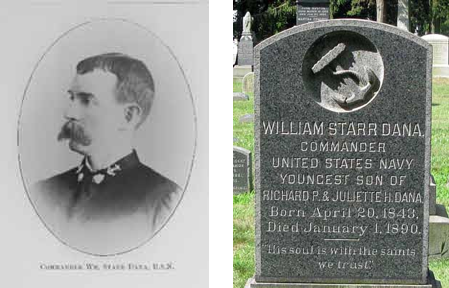
DANBY, ROBERT (1821-1886). Captain, United States Navy. Danby was born in Wilmington, Delaware. According to his descendant, Elizabeth Danby Meade, his father was a prominent cooper (barrel-maker) whose family papers are housed in the Delaware Historical Society. Robert Danby joined the United States Navy as a third assistant engineer on January 18, 1845 (some documents say 1844), and continued in active service until his mandatory retirement at age 62 in 1883. An article on Danby’s retirement that was published in the Brooklyn Daily Eagle on September 30, 1883, indicates that he was first assigned to the USS Princeton, the vessel that was the site of the 1844 infamous accident that killed Secretary of the Navy Upshur and four others when one of its two long guns, “the peacemaker,” burst sending shrapnel into the crowd and on its deck during a demonstration cruise. That article goes on to say that Danby then led a fleet of four flag ships, including the Princeton, to Galveston during the war for Texas’s independence.
His Navy pension records show that he was then detached to the Colonel Harvey on November 21, 1845. From there, Danby was at the Pensacola Navy Yard, in Florida, in charge of the steamers Allegheny and Michigan; the latteras of November 27, 1846, and the Allegheny as of July 10, 1847, when he was promoted to second assistant engineer. His widow’s pension application notes that he suffered from yellow fever while attached to the Allegheny. After an assignment on the General Taylor, he was detached to the Mississippi on November 21, 1848. Sent to special duty in San Jacinto, he returned to the Mississippi on June 5, 1849, and granted leave on November 12, 1851. Danby was promoted to first assistant engineer on April 13, 1852, and detached to the Mississippi again.
Most notable of his early achievements was his sailing in July 1853 with Commodore Matthew Perry when Danby was among the first Americans to visit Japan aboard the USS Mississippi. His journal from that expedition is housed in the Library of Congress. On that trip, he gifted the Emperor with a miniature train composed of a Baldwin locomotive and one mile of track and Danby blew the first steam whistle. Japanese artists depicted that moment in lithographs and paintings. He was ordered to the New York Navy Yard on August 2, 1855, and promoted to chief engineer on June 26, 1856. On May 4, 1857, he was attached to the Mississippi and continued to ply the China seas under Commodore Nicholson. Subsequently, he was in charge of the Mediterranean fleet before returning to Norfolk Navy Yard in Virginia.
Danby was at Norfolk at the onset of the Civil War in April 1861. He was there when the USS Merrimack was in danger of falling into Confederate hands when that ship’s move to Philadelphia was thwarted after Virginia seceded from the Union on April 17. Danby and Chief of Engineers, B. F. Isherwood, who was sent by Secretary of the Navy Gideon Welles, attempted to get the ship ready to sail but on April 20, 1861, seeing that they could not get out of Norfolk, the Merrimack was burned to the water line, sinking her to preclude capture. (Later, the Confederates resurrected the Merrimack and turned her into an ironclad, renamed the CSS Virginia, and renowned for its famous sea-battle with the USS Monitor at Hampton Roads, Virginia.)
Danby, as per his obituary in the Brooklyn Daily Eagle, was detailed to special duty at the Brooklyn Navy Yard after the firing at Fort Sumter; at the Brooklyn Navy Yard, he was a member of the board constructing ironclads. His Navy pension record also shows service at the Philadelphia Navy Yard from 1861 until 1863. In 1863, he was made fleet engineer of the South Atlantic Blockading Squadron under Admiral John Dahlgren. In his position, Danby was in charge of nearly one hundred steam vessels, four hundred engineers and the repair shops which were established under his supervision at Bay Point, opposite Hilton Head, South Carolina. The Brooklyn Daily Eagle reports that he was present at the capture of Port Royal, South Carolina. As per his Navy pension file, he was aboard the Wabash. As per his widow’s pension application, Danby suffered from a lingering cough, which became severe before his death, as a result of his aforementioned service.
Returning to Brooklyn in 1865 and in 1869, he was made inspector of machinery afloat and was sent to New Orleans, Louisiana, on January 11, 1870. During his duty in New Orleans, his Navy records indicate that he suffered from cholera and intermittent fever. Danby was promoted to captain on March 3, 1871. (Previous to 1859, chief engineers were not assigned ranks; his rank was lieutenant until June 26, 1868, then commodore until March 3, 1871.) Danby was in Brooklyn again in 1872, but was sent to Norfolk, Virginia, on December 10, 1877, and returned to New York on February 3, 1879. His obituary reports that in 1882, he was injured after being thrown from a carriage. At the time of his retirement on September 18, 1883, the Brooklyn Daily Eagle described Danby as having the faintest tinge of silver in his hair, with bright eyes, a clear complexion and carrying a cane, more as an ornament than for mobility. At that time, he had been a Brooklyn resident for 15 years and was said to have devoted the best years of his life in service to his country “who leaves behind him a record without a stain for those who follow in his footsteps to emulate.”
He last lived at 118 Ryerson Street in Brooklyn. His death was attributed to Bright’s disease and respiratory problems. An article on his funeral in the Brooklyn Daily Eagle on January 5, 1887, reports that he was buried with Naval honors and that Conterno’s Navy Yard Band led the procession.
His wife Mary, who his descendant reports met him when he was stationed in Virginia and who is interred with him, applied for and received a pension from the Navy in 1889, certificate 3,925. In her paperwork, she cited that her marriage record was destroyed in Portsmouth, Virginia, and that other documents misspelled his name as “Granby.” Letters from two guests at her wedding on January 3, 1952, were submitted to the Pension Bureau to validate that the marriage took place. Her letters about her husband’s declining health note that he suffered from bronchitis, swollen legs, lung trouble and other ailments dating from his time in service; she also said that her husband didn’t want to take medicine or even see a physician until it was too late. A surgeon from the Navy, who treated Danby at the New York Naval Hospital, and other letters from physicians to the Pension Bureau in 1889, supported his wife’s claim about his ailments stemming from his years of service. Section 141, lot 25795.

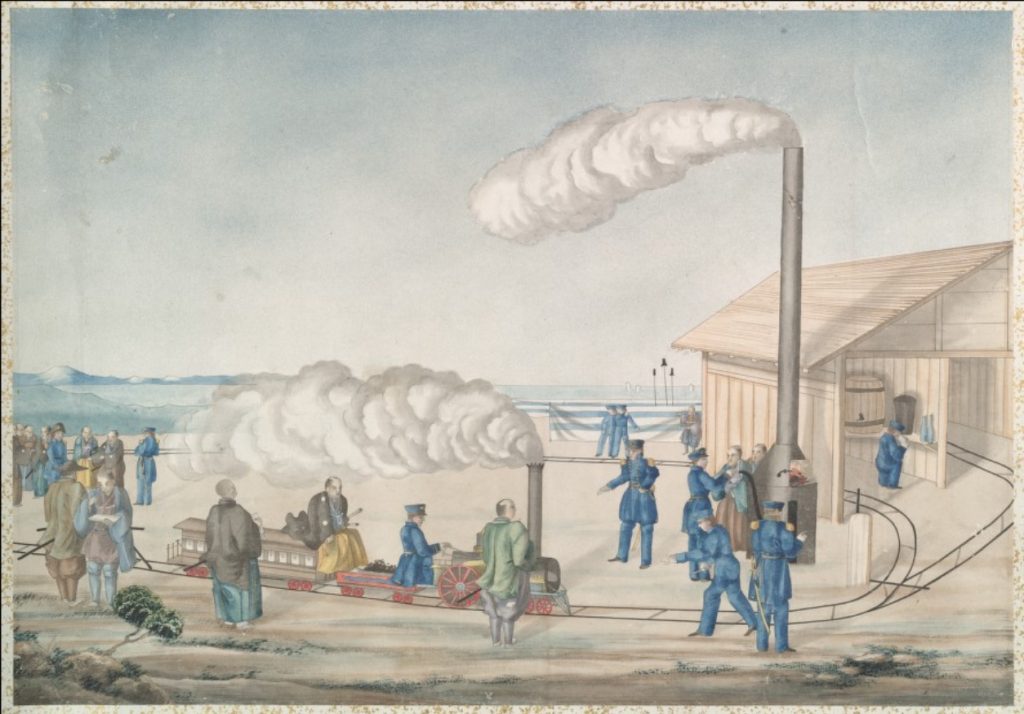
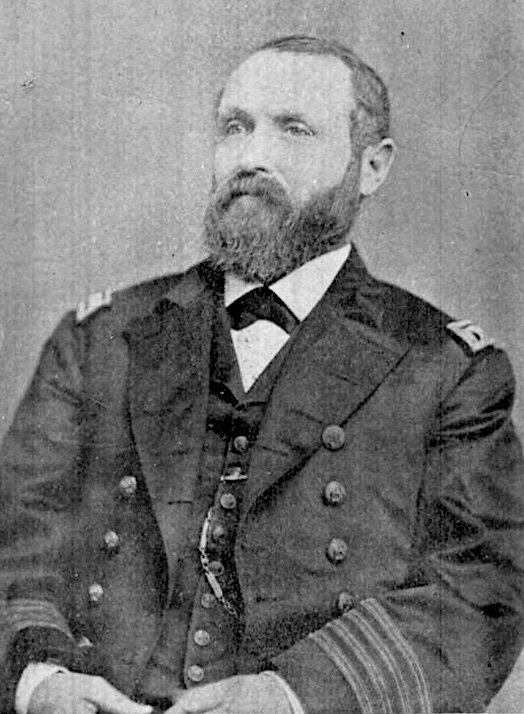
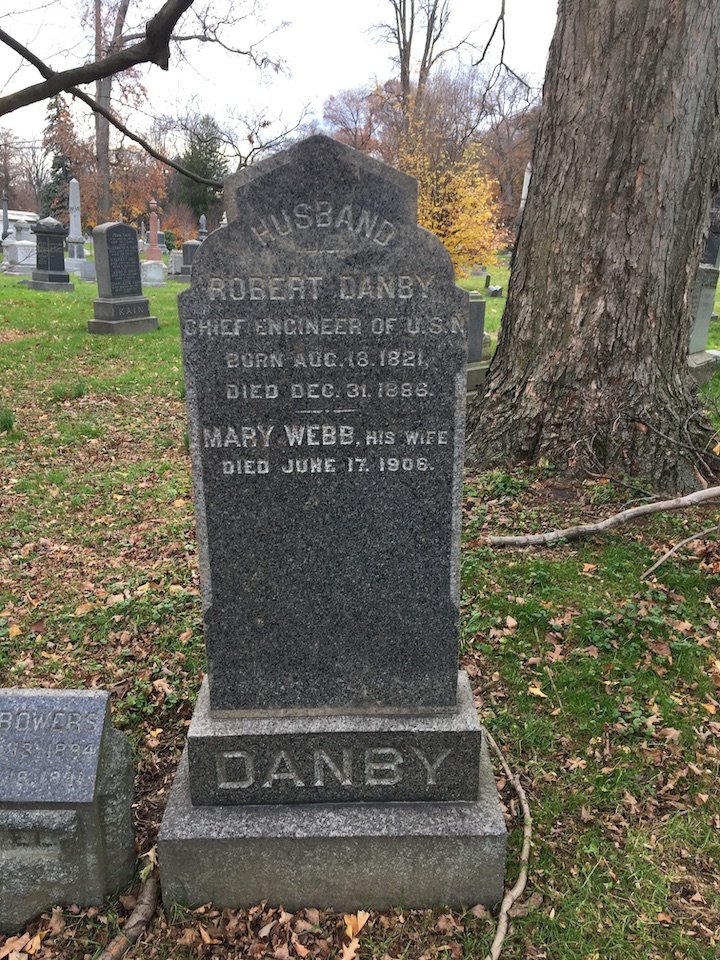

DANDREAU (or DANDARAW), MICHAEL (or MICHEL, MITCHELL) (1824-1867). Assistant engineer, United States Navy. Originally a French Canadian, born Michel Dandurand in St. Luc, Quebec, his family immigrated to Bethlehem, New York, when he was eleven years old. Together with his brother Cornelius and nephew, Paul, he enlisted in the Navy on December 28, 1861, and was appointed acting second assistant engineer on January 6, 1862. All three men are listed in Yonkers in the Rebellion of 1861-1865.
He served on the steamer Fort Henry, and was transferred to the Flag on May 6, 1862. The Flag patrolled the waters of the Carolinas and was engaged in battle in Charleston Harbor in April 1863. Dandreau was sent home because of sickness on May 14, 1863, declared unfit for duty and honorably discharged on June 3, 1863. He died of pulmonary disease on April 29, 1867. He was survived by his wife, Anna Golden Dandreau, and two sons. In 1892, his widow, Ann applied for a pension. Section 15, lot 8151.

DANIELL (or DANIEL, DANIELS), HENRY CLAY (or HARRY) (1844-1928). Private, 145th New York Infantry, Company H; 123rd New York Infantry, Company F. Daniell was born in Brooklyn. As per the sketchbook of Lafayette Post #140, he enlisted as a private on September 11, 1862, and mustered into Company H of the 145th New York; he listed his birth year as 1830 and an enlistment age of 32 on that document but his soldier records indicate a birth year of 1844 and an enlistment age of 18. He mustered out on December 9, 1863, at which time he transferred into Company F of the 123rd New York Infantry as of December 20. He mustered out at New York City on May 16, 1865.
In 1882, Daniell applied for and received an invalid pension, certificate 1,116,719. At the time he mustered into the G.A.R. on August 10, 1883, he lived in New York City and was in the real estate business. His brother, Robert Daniell (see), also served in the Civil War. He last lived in Long Beach, California. His death was attributed to heart disease. His Green-Wood index card, which states that he died at age 84, indicates that he was interred in Section 172, Lot 14244, on October 27, 1928; however, the cemetery’s burial search shows that he is interred alongside his brother in Section 112, lot 14224.

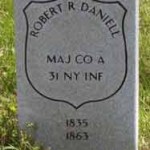
DANIELL (or DANIEL), ROBERT RAVEN (1835-1863). Major, 31st New York Infantry, Company A. Born in New Orleans, Louisiana, he enlisted at New York City as a second lieutenant on May 2, 1861, and was commissioned into the 31st New York’s Company A on May 24. Daniell was complimented by Colonel Calvin Pratt in his field report from Alexandria, Virginia, on July 22, 1861, for his “coolness and judgment.” He rose to first lieutenant on October 6, 1861, to captain on March 21, 1862, and then to major on October 4, 1862, the same day that he was transferred to the Field and Staff. While on a leave of absence in New York City, he succumbed to typhoid fever on April 13, 1863. He last lived at 205 Schermerhorn Street in Brooklyn. He was survived by his widow, Jane Shaw Daniell, whom he married in 1862, an infant daughter; his brother, Henry Clay Daniell (see), who is buried in the same lot, also served in the Civil War. Section 112, lot 14224.
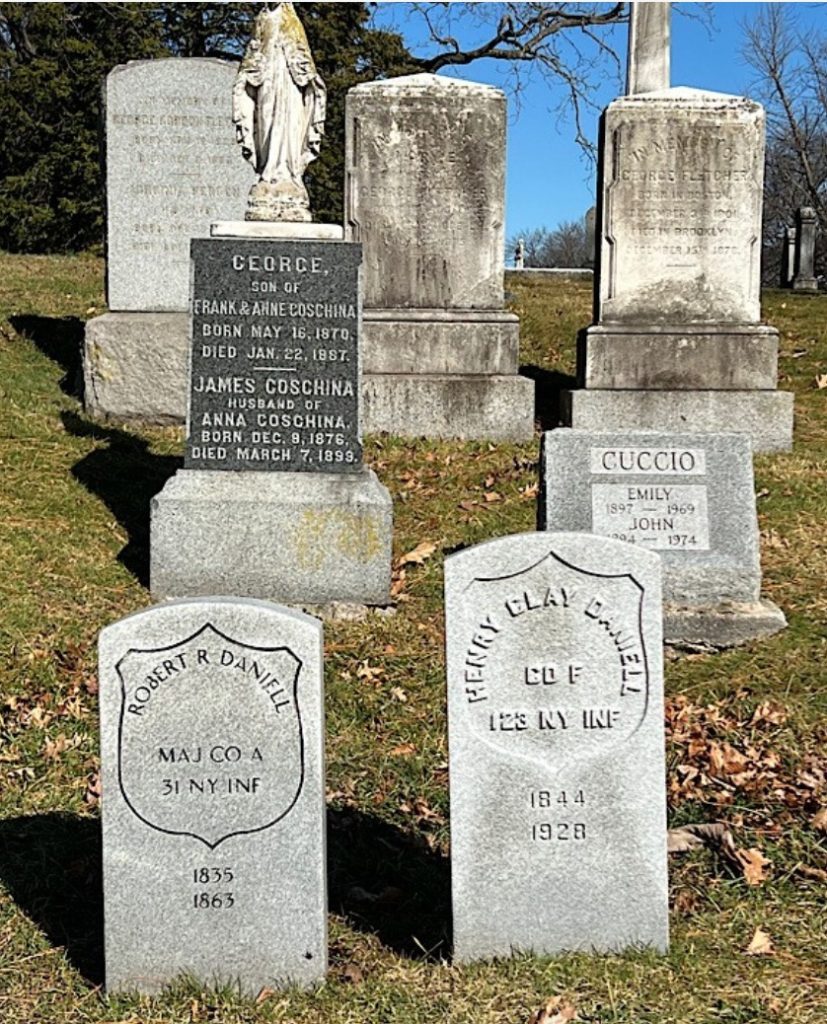
DANIELS, FRANK (or FRANZ) (1816-1891). Private, 84th New York (14th Brooklyn) Infantry, Company H; 7th Regiment, Veteran Reserve Corps, Company G. Of German origin and a baker by trade, Daniels enlisted at Brooklyn as a private on September 22, 1862, and mustered into the 14th Brooklyn the next day. He was 5′ 7″ tall with brown hair and eyes and a light complexion. On December 17, 1864, he transferred into Company G of the 7th Veteran Reserve Corps from which he mustered out on June 28, 1865, at Washington, D.C. In 1885, his application for an invalid pension was granted, certificate 314,561. His last address was on Rochester and New York Avenues in Brooklyn. His death was caused by apoplexy. Section 3, lot 21025, grave 265.
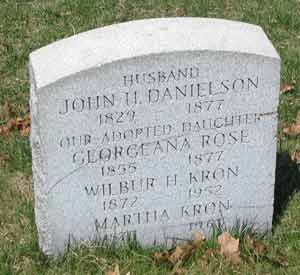
DANIELSON, JOHN H. (1829-1877). Private, 84th New York (14th Brooklyn) Infantry, Engineers; 48th New York Infantry Company C. Born in Sweden and a tailor by trade, he enlisted as a private at Brooklyn on April 18, 1861. On May 23, 1861, he mustered into 14th Brooklyn’s Engineers and was discharged for disability on July 31, 1861, at Arlington, Virginia. He re-enlisted as a private on August 30, 1862, mustered into Company C of the 48th New York, and mustered out on May 30, 1865, at New Berne, North Carolina.
He might be the John H. Danielson who is listed as a tailor in the 1870-1873 Brooklyn Directory; that man lived at 616 Atlantic Avenue. Danielson last lived at 441 Bergen Street in Brooklyn. He died from heart disease. In 1884, his widow applied for a pension, application 512,017, but there is no certification number. Section A, lot 8100, grave 762.
DARGAN (or DARGIN), CHARLES (1842-1862). Private, 70th New York Infantry, Company H. Born in Ireland, passenger records show he entered the United States in 1849. Dargan enlisted as a private at New York City on October 24, 1861, immediately mustered into the 70th New York, and was killed in battle on May 5, 1862, at Williamsburg, Virginia. Section 164, lot 15171.
DARRAGH, SIMPSON (1844-1863). Private, 1st New York Mounted Rifles, Company F; 2nd New Jersey Cavalry, Company L. An Irish native and bookkeeper who resided at 35 Carmine Street in Manhattan, Darragh became a naturalized citizen on December 20, 1860. His naturalization papers note that he was a clerk and that his former nationality was: Queen, Gr. Britain & Ire. He is listed as a clerk at the Carmine Street address in the 1860 New York City Directory.
During the Civil War, he enlisted as a private at New York City on July 15, 1862, mustered into the 1st New York Mounted Rifles two weeks later, and was discharged on an unknown date. He was 5′ 6½” tall with gray eyes, brown hair and a fair complexion who listed his occupation as clerk on the muster rolls. After re-enlisting as a private on August 15, 1863, he mustered into the 2nd New Jersey Cavalry on August 26. Wounded on an unstated date, he succumbed to his injuries at Bellaire, Ohio, on December 16, 1863, and arrived at Green-Wood for burial four days later. His name and date of death appeared on the Bodies in Transit List and in The New York Times. According to his obituary, his funeral was held at the home of his father on 26 Commerce Street in Manhattan. He was re-interred in a family plot on June 29, 1864. Section 163, lot 14880.

DARROW, JAMES C. (1824-1864). Corporal, 82nd New York Infantry, Companies K and E; 59th New York Infantry, Company I. After enlisting as a private at New York City on December 9, 1863, he mustered immediately into the 82nd New York. According to the muster roll, he listed his occupation as soldier, and was 5′ 10¼” tall with hazel eyes, brown hair and a sandy complexion. Darrow was promoted to corporal on March 1, 1864, and transferred to Company E on May 24. Shortly after he was wounded at the Battle of Petersburg, Virginia, on June 24, 1864, he was transferred to the 59th New York on July 10. On November 10, 1864, he was severely wounded in the leg at Petersburg, had the leg amputated, and died from his wounds on November 20. The burial at Green-Wood was on January 15, 1865.
According to an article about his funeral on January 16, 1865, in The New York Times, Darrow was a member of the 2nd and 12th Regiments of the New York State Militia, and had served as a “valuable and efficient” police officer in New York City. The article notes that his body was held at the Essex Street Police Station prior to the funeral and was escorted to Green-Wood by a contingent of police, members of Engine Co. No. 26, the 12th Regiment Band, a company of Continentals, members of the 12th Regiment, and other friends and citizens. He shares a grave with Joseph Darrow (see). His last residence was at 80 Hester Street in Manhattan. Section 114, lot 8999, grave 324.
DARROW, JOSEPH E. (1844-1861). Private, 84th New York (14th Brooklyn) Infantry, Company C. Born in Brooklyn and a clerk who resided at 19 Front Street, Darrow enlisted at Brooklyn as a private on April 18, 1861, and mustered into the 14th on May 23. On July 21, 1861, he was wounded in action at the Battle of First Bull Run, Virginia, was captured that day, and moved to Richmond, Virginia, where he died (while still a prisoner of war) on September 26, 1861. His body was first interred in a church graveyard in Brooklyn. When the church was razed to make way for the building of the Brooklyn Bridge, Darrow’s body was moved and buried at Green-Wood on February 15, 1882. He shares a grave with James Darrow (see). Section 114, lot 8999, grave 324.
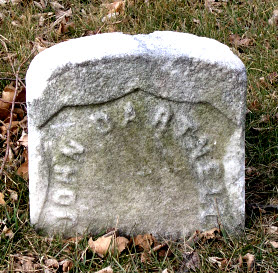
DARTNELL, JOHN (1833-1915). Fireman, United States Navy. Dartnell was born in England on the Island of Jersey and, according to his obituary in the Brooklyn Daily Eagle, knew Lily Langtry, a British actress known for her beauty, when she was a young girl. On March 1, 1860, he enlisted as a second class fireman in the United States Navy for three years. He served aboard the USS Jacob Bell and the USS Seminole from which he was discharged as a sergeant on March 1, 1863. His obituary notes that he served under Admiral George Dewey on the Seminole when Dewey was a midshipman. The ships were part of the Atlantic Blockading Squadron and engaged in battles at Charleston and Port Royal, South Carolina, and at Hampton Roads and Sewell’s Point, Virginia, where they supported the Peninsula Campaign.
After the Civil War, one of Dartnell’s occupations was as a maker of salad dressing for a well-known firm; he was also a porter according to the census of 1880. In the 1896-1898 Brooklyn Directory, Dartnell is listed as a spicemaker living at 138 Cumberland Street. An Odd Fellow and a former noble grand of his lodge, he also belonged to George C. Strong Post #534 of the G.A.R., and the Naval Veterans Associations. He applied for and received a pension from the Navy, certificate 24,170. His military service is verified by the 1890 Veterans Census and a government-issued stone circa 1900 that marks his grave. He last lived at 380 Baltic Street in Brooklyn. His death was caused by nephritis. His funeral took place at the Chapel at Green-Wood. Frances Dartnell, who is interred with him, applied for and received a widow’s pension, certificate 801,660. He was also survived by a son and daughter. Section B, lot 11005, grave 150.
DAUBER, FREDERICK (1841-1887). Private, 4th New York Infantry, Company F. A Brooklyn native, Dauber enlisted as a private at New York City on January 3, 1862, and mustered into the 4th New York on that day. He was discharged for disability on June 4, 1862, at Fort McHenry in Baltimore, Maryland. Active in politics, he was secretary of the 15th Ward’s Democratic Committee in 1868. He last lived at 307 Navy Street in Brooklyn. The cause of his death was acute tuberculosis. In 1891, his wife applied for and received a widow’s pension, certificate 358,453. Section 202, lot 26203.
DAUMONT, ANTHONY (1844-1912). Private, 21st New Jersey Infantry, Company C. Daumont was born in New York City. After he enlisted as a private on August 28, 1862, he mustered into the 21st New Jersey on September 15, 1862, and according to his obituary in The New York Times, he was taken prisoner at the Battle of Chancellorsville, Virginia. He mustered out on June 19, 1863, at Trenton, New Jersey.
After the Civil War, Daumont worked in the Freight Department of the Central Railroad of New Jersey. In 1890, his pension application was approved, certificate 622,910. His obituary in the New York Herald confirms his Civil War service. He last lived at 262 Clerk Street in Jersey City, New Jersey. Daumont died from pneumonia. In 1912, Frances Daumont applied for and received a widow’s pension, certificate 755,111. Section 85, lot 5651.
DAUNCEY, EDWARD (or EDWIN) N. (1842-1882). Private, 84th New York (14th Brooklyn) Infantry, Company B; 5th New York Veteran Infantry, Company I. A Brooklynite by birth, Dauncey enlisted there as a private on May 18, 1861, and mustered into the 14th Brooklyn five days later. Records show that he was arrested on March 8, 1864, at Alexandria, Virginia, was transferred into the 5th Veterans on June 2, 1864, and mustered out on August 21, 1865, at Hart’s Island, New York Harbor. At the time of muster out, he was absent and still under arrest. According to the 1880 census, he was employed as a real estate agent. At the time of his death, he was in the Brooklyn Penitentiary. Section 80, lot 463, grave 45.
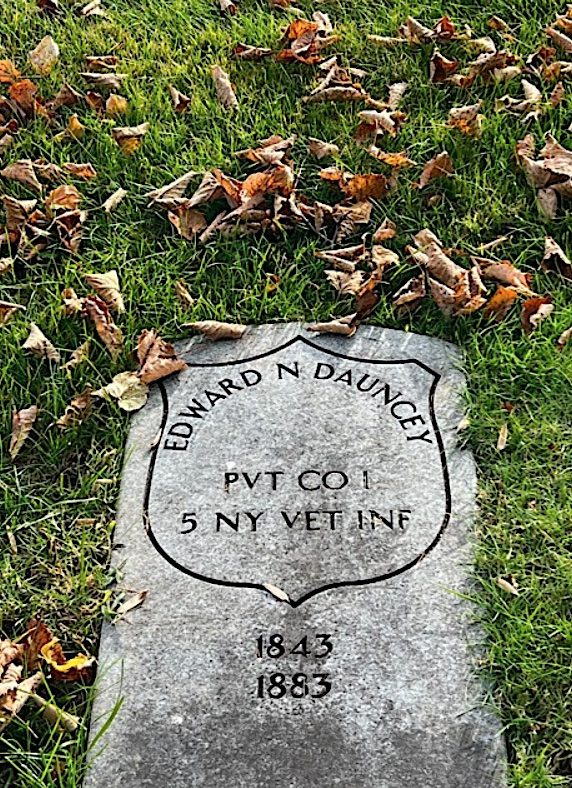
DAVENPORT, LINDSEL (or LINDSELL) (1844-1877). Private, 13th Regiment, New York State National Guard, Company F; 23rd Regiment, New York State National Guard, Company H. A Brooklynite by birth, he first served for three months with the 13th Regiment’s Heavy Artillery in 1862. A year later, Davenport served with the 23rd Regiment when it was activated for 30 days. His last address was 1105 Pacific Street in Brooklyn. He died from gastritis. Section 164, lot 16326.
DAVID, VALENTINE (1843-1886). Corporal, 56th Regiment, New York State National Guard, Company C. David, who was born in Brooklyn, enlisted as a private and served with the 56th Regiment for 30 days in 1863. When the regiment was reactivated for 100 days in 1864, he re-enlisted and returned to the same company as a private, and was promoted to corporal at some point before he mustered out. According to the Brooklyn Directory for 1773 and the 1880 census, he worked as a painter. A member of the G.A.R., George C. Strong Post #534, his last residence was 1021 Myrtle Avenue, Brooklyn. Diptheria is listed as the cause of his death. Section 67, lot 9957.

DAVIDSON, ROBERT W. H. (1842-1896). Private, 30th Massachusetts Infantry, Company I. Davidson was born in New York. A harness-maker by trade and a resident of Boston, Massachusetts, Davidson enlisted as a private on November 6, 1861. He mustered into the 30th Massachusetts on that date, and appeared on the muster roll as present in Camp Chase in Lowell, Massachusetts, on January 1, 1862. At that time, he was 5′ 5″ tall with blue eyes, light hair and a light complexion. In November and December of 1862, Davidson was on detached service as a guard in New Orleans. His muster roll for March and April 1863 indicates that he was sick and in a Regimental Hospital in Baton Rouge, Louisiana. He was discharged for disability on May 25, 1863, at Baton Rouge. His discharge papers report that he had been unfit for duty for sixty days due to malarial fever that he had contracted while in the line of duty near Vicksburg, Mississippi, in July 1862. The fever, which attacked him repeatedly, resulted in chronic diarrhea and emaciation.
In 1882, he applied for an invalid pension, application 451,828, but there is no certificate number. Davidson is listed as being in the liquor business at 151 Furman Street in the 1890-1892 Brooklyn Directory. His last residence was 77 Furman Street in Brooklyn. His widow successfully applied for a pension, certificate 443,963. Section 1, lot 12631, grave 3.
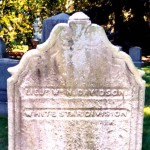
DAVIDSON, WILLIAM N. (1842-1864). Second lieutenant, 78th New York Infantry, Company A. Born in Scotland, he enlisted as a private at New York City on January 9, 1862, mustered that day into Company A of the 78th New York, and was promoted to sergeant on February 28, 1863. He re-enlisted as a veteran on January 38, 1864, was promoted to second lieutenant the next day, was commissioned but never mustered. On April 28, 1864, he died at a hospital in Stevenson, Alabama, due to congestion of the bowels. Davidson was buried at Green-Wood on May 16, 1865. Section 158, lot 15762.
DAVIES, JOHN (1834-1897). Second lieutenant, 37th Regiment, New York State National Guard, Company F. Davies, a native of England, enlisted and was commissioned into the 37th on May 6, 1864, as a second lieutenant. He mustered out after 30 days on June 6 at New York City. He last lived at 207 14th Street in Brooklyn. His death was caused by apoplexy. Section 145, lot 23877.
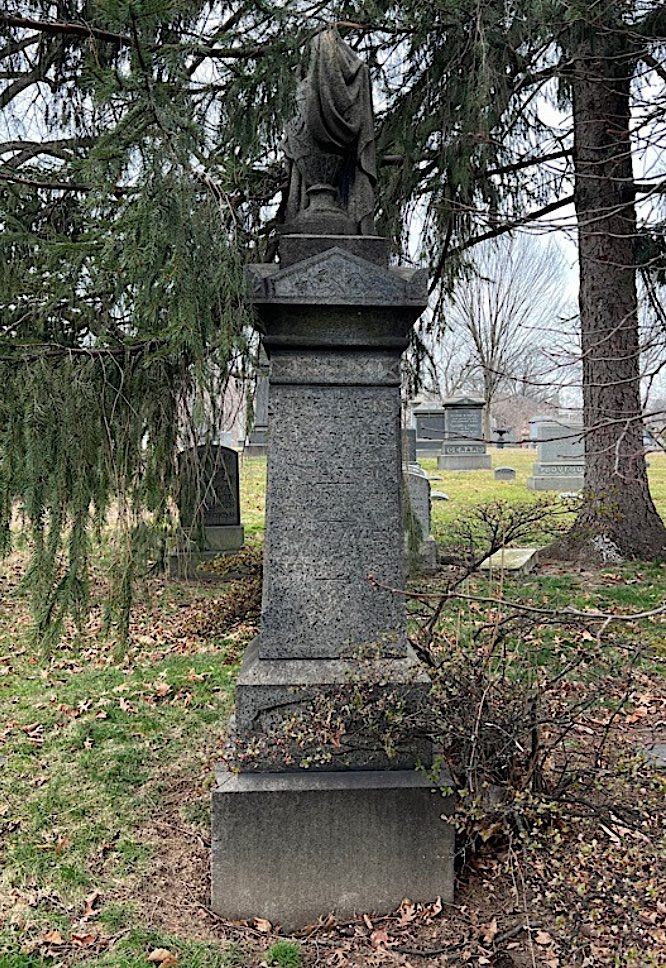

DAVIS, ALSON CHAPIN (1830-1881). Colonel, 9th Kansas Volunteers (later renamed the 2nd Kansas Cavalry). Active in the political history of Kansas, he was President Buchanan’s appointee as attorney general of the territory of Kansas from June 1858 into February 1861. A lawyer by profession, he was also a Democratic legislator on the Free State pro-slavery ticket, and helped raise funds for an independent newspaper in Leavenworth (Wyandotte County).
At the start of the Civil War, Kansas was only three months into its statehood and embraced the Union cause. Davis obtained authority from Major General Fremont, who headed the Western Volunteers, to raise a cavalry regiment there, originally designated as the 2nd Kansas Volunteers. On January 9, 1862, Davis mustered in as colonel of the newly formed and renamed 9th Kansas Volunteers, and resigned on February 4, when the regiment was below regulation size. The name of the regiment changed to the 2nd Kansas Cavalry on March 27, 1862.
Davis lived in Brooklyn after the war, was a lawyer with the firm of Davis & Lyon on Pine Street in Manhattan, and expressed an interest in running for attorney general in Brooklyn in 1871. He is listed as a lawyer at 8 Pine Street in Manhattan in the 1873-1876 Brooklyn Directory; during those years, he lived at 78 2nd Place in Brooklyn. The 1875-1876 New York City Directory lists him as a lawyer at 61 Liberty Street living at the same 2nd Place address in Brooklyn. He last resided in Long Meadow, Massachusetts. He died from Bright’s disease. Davis is named in Roger Hunt’s book, Colonels in Blue- Missouri and the Western States and Territories: A Civil War Biographical Dictionary (2019). Section G, lot 19891.
DAVIS, CALEB W. (1829-1876). Private, 23rd Regiment, New York State National Guard, Company K. After Davis enlisted at Brooklyn, he mustered into the 23rd Regiment, served 30 days in 1863, and mustered out at the expiration of his enrollment. His last residence was 644 Hancock Street in Brooklyn. The cause of his death was heart disease. Section 15, lot 17263, grave 305.
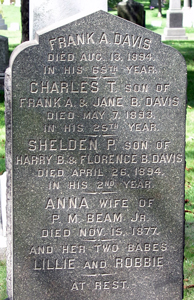
DAVIS, FRANK A. (1830-1894). Second lieutenant, 28th New York Light Artillery; quartermaster sergeant, 53rd New York Infantry, Company E. He enlisted as a private at New York City on August 11, 1861. On August 27, 1861, he mustered into the 53rd New York, was promoted to quartermaster sergeant at some point, and mustered out at Washington, D.C., on March 21, 1862. On August 3, 1863, he was commissioned into the 28th New York Light Artillery at New York City as a second lieutenant and mustered out there on July 31, 1865.
According to the census of 1870, he worked as a machine tool dealer. In 1880, the census listed him as a patent agent. The cause of his death was diabetes. Jane Davis, who is interred with him, applied for and received a widow’s pension in 1894, certificate 415,495. Section 115, lot 20861.
DAVIS, GEORGE (1828-1871). Private, 61st New York Infantry, Company A. Born in England, Davis enlisted at Brooklyn as a private on February 10, 1864, mustered into the 61st New York the same day, and mustered out of service on July 14, 1865, at Alexandria, Virginia, at which time he was sick and absent. His last residence was 73 Butler Avenue in Brooklyn. Stomach cancer caused his death. His remains were moved to the current location on November 2, 1888. Section 172, lot 26399.
DAVIS, GEORGE J. (1845-1866). Corporal, 158th New York Infantry, Company H. Born in Jersey City, New Jersey, he enlisted on September 3, 1862, at Brooklyn, as a private, and mustered into the 158th the same day. He was promoted to corporal of his company on December 1, 1864, and mustered out of service on June 30, 1865, at Richmond, Virginia. His last residence was 219 West 43rd Street in Manhattan. He died from consumption. Section B, lot 8100, grave 453.
DAVIS, GEORGE W. P. (1840-1888). Second lieutenant, 22nd Regiment, New York State National Guard, Company E. Davis enlisted at New York City and mustered into the 22nd as a sergeant on May 28, 1862, and mustered out there after three months of service on September 5. The next year, he was commissioned into the same regiment and company, promoted to second lieutenant on June 18, 1863, and mustered out after serving for 30 days on July 24 at New York City. He died of a brain concussion at his home in Plainfield, New Jersey. Section 207, lot 20543.
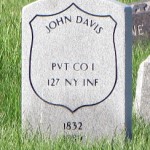
DAVIS, JOHN (1832-1889). Private, 127th New York Infantry, Company I. During his service, he enlisted at Huntington, Long Island, on September 8, 1862, mustered in the next month, and remained with his regiment until it mustered out on June 30, 1865, at Charleston, South Carolina. His last residence was 1163 Myrtle Avenue, Brooklyn. He died from valvular disease of the heart. Section 6, lot 20118, grave 519.
DAVIS, JOHN (1817-1896). Private, 5th New York Infantry, Company I. Born in England, he was a farmer when he enlisted at New York City at age 44 on April 25, 1861. Davis was 5′ 7¾” tall with hazel eyes and dark hair. He mustered into the 5th on May 9, and was discharged for disability after being treated for exposure on April 22, 1862, at Fort Monroe, Virginia. He last lived at 627 Warren Street in Brooklyn. His cause of death was attributed to old age. Section 97, lot 10494.

DAVIS, OTIS B. (1830-1918). Private, Orleans Guards, Louisiana Militia, Company B, Confederate States of America. Davis was born in Sandown, New Hampshire. As per the 1890 Veterans Schedule, he served as a private in Company B of the Orleans Guards, Louisiana Militia, for one year from 1861 through 1862. No specific months are indicated on that census and there are no other documents recording his service.
As per his obituary in the Brooklyn Standard Union, he was a traveling salesman in New England, by horse and carriage, for the Fairbanks Scales Company. The census of 1870 notes that he was living in Raritan, New Jersey, with his wife and thirteen-year-old son, Charles, who was born in New York, and an Irish domestic servant, Mary Tahen. Davis was a farmer with $10,000 in real estate and personal property valued at $1,200. Davis bought the farm in 1870 when he had consumption and doctors did not think he would live much longer; he recalled at his 60th wedding anniversary that he expected to soon die there. He and his wife were still living in Raritan at the time of the census of 1880; he was a farmer who employed a couple from Pennsylvania who served, respectively, as a laborer and housekeeper. The census of 1915 reports that he and his wife were living in Brooklyn with their son Charles; Otis Davis, 85 years old, was not working.
An article in the Brooklyn Daily Eagle on November 30, 1915, features Davis and his wife, Lizzie, as happy celebrants of their 60th wedding anniversary. The article refers to the couple as “white-haired lovers” who are “cheerful in spirit, and enjoying health remarkably good for their ages”; Otis was 85 and Lizzie was 81. Their son Charles O. Davis was mentioned in the article as a former colonel of the 13th Regiment, having served with the 13th for 28 years. Otis Davis last lived at 51 Clark Street in Brooklyn; he died at the nearby St. George Hotel. His funeral took place at the Clinton Avenue Congregational Church. According to papers filed in conjunction with his will in Kings County in 1918, his personal property was valued at less than $2,500. His estate was left to his widow, Lizzie Lymann Moses Davis. Section 150, lot 16705.
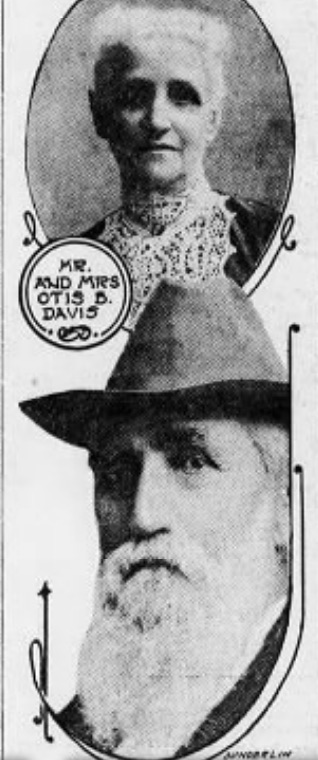
DAVIS, SOLOMON GILBERT (1846-1893). Private, 63rd New York Infantry, Company C. Born in New York City, Davis was 5′ 2″ tall with a light complexion, brown eyes, and light hair. He was by occupation a laborer. Enlisting at New York City as a private on June 23, 1863, he mustered into Company C of the 63rd New York on September 21 of that year, and mustered out on June 30, 1865, at Alexandria, Virginia. In the 1880 U.S. census, his occupation was listed as job printer; subsequently, according to the Brooklyn Directory of 1890, he became a letter carrier. In 1890, he applied for an invalid pension, certificate 642,127. He last lived at 229 Adams Street in Brooklyn. Shortly after his death from phthisis in 1893, Susan Davis applied for and was granted a widow’s pension, certificate number 396,678. Section 17, lot 17245, grave 1342.

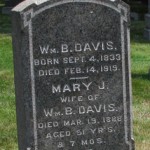
DAVIS, WILLIAM BROOK (1833-1919). Private, 23rd Regiment, New York State National Guard, Company B. A native of New York City, Davis is listed as a coachmaker who lived at 83 Carleton Avenue in the 1857-1862 Brooklyn Directory. During the Civil War, he enlisted at New York City in 1863 and served with the 23rd Regiment when it was activated for 30 days that year. After the war, he was a member of the Veteran Association of the 23rd Regiment.
A carriage manufacturer by trade, he had a factory on Henry Street in Brooklyn for fifty years. The 1873-1876 and 1890-1892 Brooklyn Directories lists him as a carriage builder at 18 Henry Street; during those years, he lived at 84 Poplar Street. His last address was 84 Poplar Street in Brooklyn. Davis died of apoplexy. Section 138, lot 26048.
DAVIS, WILLIAM W. (1839-1909). Corporal, 84th New York (14th Brooklyn) Infantry, Company H; Invalid Corps. Davis’s birthplace is unclear. His muster roll notes that he was born in Detroit, Michigan; Green-Wood records report that he was born in New York City. A compositor by trade, Davis enlisted at Brooklyn as a private on April 18, 1861, and mustered into the 14th Brooklyn on May 23. He was promoted to corporal on May 25, 1862, and wounded in action at the Battle of Second Bull Run, Virginia, on August 29, 1862. His muster roll indicates that he returned from the hospital on January 20, 1863, and although on the muster roll in April 1863, he was absent and sick in Washington, D.C., on June 20, 1863. He was transferred to the Invalid Corps on July 16, 1863, and mustered out on August 21, 1863. At that time, he was an unmarried laborer.
As per family lore, Davis married Mary Smith Clayton Byram, the widow of his best friend, John J. Byram (see). Davis, according to the story, recovered from wounds at Bull Run and then visited Mary Byram to pay his respects for her loss. Eventually, the two married. Davis last lived at 183 Warwick Street in Brooklyn. His death was attributed to old age. Section 55, lot 9367.
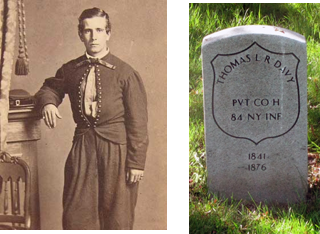
DAVY (or DAVEY), THOMAS L. R. (1841-1876). Private, 84th New York (14th Brooklyn) Infantry, Company H. A New Yorker by birth and a bookkeeper by occupation, Davy enlisted at Brooklyn on April 18, 1861, mustered in on May 23, and was discharged on September 3, 1863, at Washington, D.C. According to his muster roll, he was detailed as a clerk in the Adjutant General’s Office in April 1863.
The 1869 Brooklyn Directory lists Davy as a clerk; according to the census of 1870, he was a bookkeeper with a personal estate of $1,500. He was a member of the 14th’s War Veterans’ Association and served as its financial secretary. His pension record indicates that he also served in the United States General Service. He last lived at 298 Tompkins Avenue in Brooklyn. His death was caused by heart disease. In 1903, Charlotte Davy applied for and received a widow’s pension, certificate 575,538. Section 12, lot 14231.
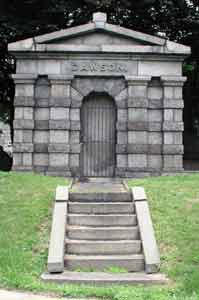
DAWSON, BENJAMIN FRANKLIN (1847-1888). Assistant surgeon, United States Army. A New York City native, Dawson studied medicine at Columbia, served in the last year of the Civil War as an assistant surgeon in the United States Army, and was graduated from the College of Physicians and Surgeons in 1866. He opened his practice in New York, specializing in obstetrics and diseases of women and children. In 1868, he founded the American Journal of Obstetrics and Diseases of Women and Children, which he edited until 1874. He also co-authored Pathological Anatomy of the Female Sexual Organs (1868), edited the American edition of Obstetric Operations (1870), and wrote Relations between Alimentation and the Gastrointestinal Disorders of Infants and Young Children (1875).
In 1876, he invented a new galvanic battery for caustic surgery, an advance in 19th century medicine for gynecological procedures. As per the 1876-1878 and 1882-1883 New York City Directories, he was a physician living at 8 East 15th Street in Manhattan. His last residence was 8 East 15th Street in New York City. His death was caused by diabetes. He was survived by his wife, Julia Merritt Dawson, whom he married in 1884, and a two-year-old son. Section 33, lot 3477.
DAWSON, JOHN (1829-1899). Corporal, 139th New York Infantry, Company H. Born in Scotland, he enlisted as a private at Brooklyn on August 21, 1862, mustered into the 139th New York on September 9, and was promoted to corporal on January 26, 1863. Dawson was wounded in action at Cold Harbor, Virginia, on June 2, 1864, and was present on the muster rolls in October 1864. He was discharged from Ladies Home Hospital at New York City on May 23, 1865.
According to census records in 1880, Dawson was a boilermaker in civilian life. In 1880, his application for an invalid pension was approved under certificate 329,472. The Veterans Schedule for 1890 confirms his military service and wartime injury. According to his obituary in the Brooklyn Daily Eagle, he belonged to Benjamin F. Middleton Post #500 of the G.A.R. whose members were invited to his funeral. Dawson last resided at 1057 Bedford Avenue, Brooklyn. Shortly after his death due to bronchitis in 1899, Fannie (or Fanny) Dawson applied for and received a widow’s pension, certificate 521,870. Section 180, lot 12598, grave 1.

DAY, ALBERT A. (1840-1911). Major by brevet; captain, 20th Michigan Infantry, Companies B, D, and H. A Michigan native and resident of Ann Arbor, Day was a graduate of the University of Michigan. He enlisted at Ann Arbor as a private on August 15, 1862, and mustered into Company H of the 20th Michigan the next day. He quickly rose through the ranks becoming a corporal on an unspecified date; sergeant (January 15, 1863); second lieutenant of Company B (May 23, 1863); first lieutenant (May 12, 1864); and captain of Company H (September 10, 1864). On March 15, 1865, he was promoted to major by brevet and selected to command the regiment on that day. He mustered out on May 30, 1865, at Delaney House, Washington, D.C. According to his obituary in The New York Times, he was recorder of commissions for the Ninth Army Corps, judge advocate general of court-martial in Washington, D.C., and provost marshal in East Tennessee.
After the war, Day returned to Saginaw, Michigan, where he practiced law and was a prosecuting attorney. He also held the title of United States Receiver of Public Moneys and was the General State Inspector. In 1867, he moved to Brooklyn where he served as an agent and corresponding secretary for the Brooklyn Association for Improving the Condition of the Poor, a position that he held throughout his lifetime. In addition, he was a senior member of Day & Smith, a law firm at 164 Montague Street in downtown Brooklyn. The census of 1880 indicates that he was a lawyer living in Brooklyn. The Veterans Census of 1890 confirms Day’s military service in the Civil War. According to the census of 1900, he was still practicing law but had moved to Hempstead, Long Island. In 1904, he applied for and received a pension, certificate 1,089,475. Day last resided at 104 Livingston Street in Brooklyn. He died of nephritis in Plattsburg, New York. Ella Day’s application for a widow’s pension was granted in 1911, certificate 753,886. Section 192, lot 23640, grave 6.
DAY, BENJAMIN E. (1839-1871). Private, 1st Massachusetts Infantry, Company G. A native of Sanford, Maine, and a clerk by trade, Day enlisted as a private at Boston, Massachusetts, on May 23, 1861, and mustered into Company G of the 1st Massachusetts that same day. On March 7, 1863, he was detailed as a cook to the Division Hospital. Day was admitted to Armory Square Hospital in Washington, D.C., the same hospital where Walt Whitman was a volunteer nurse and where the Prentiss brothers (see) were treated, on June 21, 1863, suffering from chronic diarrhea. He was released and returned to duty on August 3, 1863. He mustered out at the expiration of his three-year enlistment on May 25, 1864, at Boston.
On June 27, 1864, Day married Elizabeth Clifford in Charlestown, Massachusetts. The New York City Directory for 1867 lists him in the produce business; the 1870 census reports that he lived in New York City with his wife and young daughter and was a butcher. As per his obituary in the New York Herald, which was also published in Maine newspapers, Day was a member of Big Injuns of Manhattan (this may have been a group associated with Tammany Hall); his comrades were invited to gather to attend his funeral. His death certificate indicates that he was married and employed as a produce merchant. He last lived in Manhattan. Section 17, lot 17245.
DAY, CYRUS H. (1838-1872). Sergeant, 82nd New York Infantry, Company K. Originally from New Jersey, Day enlisted on April 21, 1861, at New York City, as a private, and mustered into the 82nd on May 31. After a promotion to sergeant of his company a year later on May 31, 1862, he was reduced in rank to private and was dishonorably discharged from service on July 15, 1865. His last residence was 426 Third Avenue in Manhattan. The cause of his death is listed as phthisis. Section 187, lot 20070.
DAY, JAMES (1842-1881). Sergeant, 84th New York (14th Brooklyn) Infantry, Company K; 5th New York Veteran Infantry, Company I. He enlisted at Brooklyn as a private on July 1, 1861, mustered in the next month on August 1, was listed as absent and sick in September 1862, was promoted to sergeant on January 1, 1864, and transferred into the 5th New York Veterans on June 2, 1864. Day was discharged in July 1864 at the expiration of his enlistment. Day died from pneumonia. He was the brother of John Day (see). Section 154, lot 22798.

DAY, JOHN (1837-1917). First lieutenant, 159th New York Infantry, Companies K and B. A Brooklynite by birth, he lived at 19 Henry Street at the time of his enlistment at Brooklyn as a corporal on August 23, 1862. He mustered into Company K of the 159th New York on November 1. At some point he was promoted to first sergeant and then became a first lieutenant with rank from June 14, 1864, effective upon his transfer to Company B on September 2, 1864. He mustered out on October 12, 1865, at Berryville, Virginia. In civilian life, he was employed as a plumber. In 1904, he filed for a pension, claim number 1,321,531. His obituary in The New York Times credited his service as a veteran. His brother was James Day (see). According to his death certificate, Day last lived at 1817 East 14th Street in Brooklyn. His death was attributed to septio prostatic cystitis.Section 154, lot 22798.

DAYTON, AUGUSTUS JEHIEL (1829-1897). Captain, 159th New York Infantry, Company B; first lieutenant and adjutant, 51st New York Infantry; private, 13th Regiment, New York State Militia, Company B. Dayton’s father, John A. Dayton, was alderman of the 11th Ward in Brooklyn, and chairman of the War Committee in 1860. Ancestors in the Dayton family fought in the War of 1812, the American Revolution and were original founders of East Hampton, Long Island. Circa 1851, Augustus married his first wife, Harriette Colfax; two of their children died young, one of whom died in July 1861 and another in 1864. Augustus Dayton is listed as a clerk in the 1857-1862 Brooklyn Directory.
During the Civil War, Dayton, who was known as “Gus,” enrolled as a private on April 23, 1861, mustered into the 13th New York State Militia, and mustered out on August 6. He re-enlisted at Brooklyn as a first lieutenant on August 16, 1861, was commissioned into the Field and Staff of the 51st on October 2 as an adjutant. He served with his friend Samuel Sims (see),to whom his sister Carrie Dayton was engaged, listed his occupation as clerk and storekeeper and his address as 301 Adelphia Street. He was discharged on May 16, 1862, tendering his resignation on account of poor health. Service continued when he re-enlisted at Albany, New York, as a first lieutenant on August 28, 1862, and was promoted to first lieutenant and adjutant on that same day. He was commissioned into the Field and Staff of the 159th on September 2, 1862, was promoted to captain that month on September 24 effective upon his transfer that day to Company B, and was discharged on February 28, 1863. His sister Carrie’s fiancé, Captain Samuel Sims of the 51st New York, was killed at the Battle of the Crater (Petersburg, Virginia); two of his brothers also served for the Union.
Although Dayton appears to have been innocent of any wrongdoing, he was involved in the Callicott whiskey revenue fraud scandal of 1867, and was arrested with bail set $20,000. That controversy centered around the removal of whiskey from a warehouse. After his divorce from his first wife, he married Isabelle Todd Brown, a widow, in Ft. Wayne, Indiana, on April 30, 1872.
Active in civic and veterans’ affairs, he joined Ulysses S. Grant Post #327 of the G.A.R. on February 26, 1896, and was a member of the Society of Old Brooklynites, and the Volunteer Firemen’s Association. As per an online biography on findagrave website, Dayton was an avid fisherman who made his own tackle and rods. He is cited in an article in the Brooklyn Daily Eagle, “Some Crack Fisherman,” on September 15, 1894, as a worker in the Bureau of Streets in the Department of City Works who claimed to have caught a 22-pound striped bass off Coney Island pier in July 1894. He applied for an invalid pension days before his death citing disability due to catarrh of the stomach and intestines. He applied for and was granted an invalid pension. Dayton last lived at 421 Sixth Avenue in Brooklyn. His death was caused by anemia. Isabelle Dayton applied for and received a widow’s pension in 1897, certificate 1,200,320. Section 159, lot 15483.
DAYTON, EDWARD F. (1837-1868). Sergeant, 102nd New York Infantry, Company G. Born in Baltimore, Maryland, Dayton enlisted as a private on February 28, 1862, and mustered immediately into the 102nd New York. He rose to corporal on July 11, 1862, was reduced to ranks on November 6 of the same year, and became a sergeant on February 1, 1863. After re-enlisting on February 24, 1864, he became a corporal on July 10, 1864, rose to sergeant on August 17, and mustered out on July 21, 1865, at Alexandria, Virginia. His last address was 386 East 4th Street in Manhattan. Section 61, lot 747.
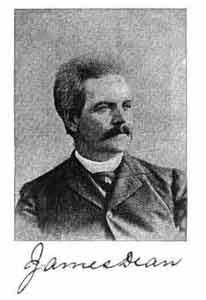
DEAN, JAMES (1845-1918). Sergeant, 120th New York Infantry, Company K; corporal, 72nd New York Infantry, Company C. After enlisting as a private at New York City on August 22, 1862, Dean, a native of Scotland, mustered immediately into the 72nd New York. He was promoted to corporal on May 10, 1864, and was transferred into the 120th New York as a private on July 23, 1864. He became a corporal on October 8, rose to the rank of sergeant on February 13, 1865, and mustered out on June 3, 1865, at Washington, D.C.
According to the census of 1880, he was employed as a florist. The Veterans Census of 1890 confirms his Civil War service. By 1900, census data indicates that he was retired. He applied for and was granted an invalid pension in 1909, certificate 1,158,931. His last residence was 228 Bay View Avenue in Freeport, Long Island. Dean died from apoplexy. Louise Dean, who is interred with him, received a widow’s pension in 1918, certificate 862,290. Section 102, lot 11052.
DEAN (or DEEN), SCOTT (1840-1876). First lieutenant, 95th New York Infantry, Companies F and C; second lieutenant, 42nd New York Infantry, Company I; private, 22nd Regiment, New York State National Guard, Company D. A native of New York City and employed as a clerk, Dean was 5′ 11″ tall with grey eyes, light hair and a light complexion. He enlisted as a private at New York City on May 28, 1862, mustered immediately into the 22nd National Guard, and mustered out after three months on September 5 at New York City. On October 7, 1862, he re-enlisted as a second lieutenant at New York City, was commissioned into the 42nd New York four days later, and was discharged on January 8, 1863. On August 25, 1863, he re-enlisted as a private at New York City, and mustered into Company F of the 95th New York that day. He was wounded in action by Confederate gun fire at the Battle of the Wilderness, Virginia, on May 5, 1864. At some point, he was promoted to sergeant in Company I, but returned to Company C on August 18, 1864, when he was promoted to second lieutenant. On November 25, 1864, he was promoted to first lieutenant and transferred back to Company I. He mustered out on July 16, 1865, in the field in Virginia. In 1875, he applied for an invalid pension that was granted under certificate 135,720. He last lived in Yonkers, New York. The cause of his death is listed as enteric fever. In 1878, his widow, Jane Dean, who is interred with him, applied for and received a pension, certificate 301,298. Section 8, lot 9538.
DeBEVOISE, GEORGE BUNEFORD (1835-1862). Sergeant, 84th New York (14th Brooklyn) Infantry, Company H. A New York City native, he married Henrietta Hunt in 1857; they had one son. DeBevoise is listed as a painter in the 1858 Brooklyn Directory who lived at 40 Clermont Avenue. After enlisting at Brooklyn as a corporal on April 18, 1861, he mustered into the 14th Brooklyn on May 23, and was promoted to sergeant on July 1, 1861. According to his muster roll, DeBevoise was a painter by trade. He died of typhoid fever on June 14, 1862, at General Hospital, Washington, D.C. The shipment of his body, back from the front, was recorded on the Bodies in Transit list. The 1862 Brooklyn Directory notes that he lived at 75 Adelphi Street. On April 28, 1863, Henrietta DeBevoise applied for and received a widow’s pension, certificate 18,462. On November 16, 1865, a minor’s claim for a pension was granted under certificate 95,438. He and William DeBevoise (see) were brothers. Section 114, lot 8999, grave 974.
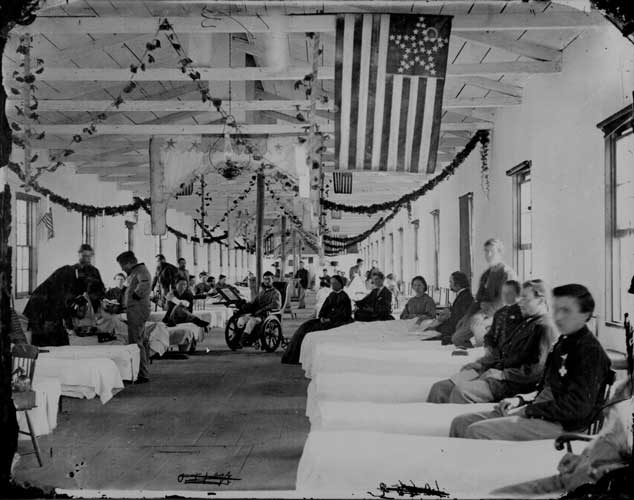
DeBEVOISE, WILLIAM H. (1826-1886). Lieutenant colonel, 84th New York (14th Brooklyn) Infantry, Company H. Born in Brooklyn, DeBevoise is listed as a bookkeeper who lived at 40 Clermont Avenue in the 1858 Brooklyn Directory. Enlisting as a captain on April 18, 1861, at Brooklyn, he was commissioned into his company the next month on May 23. His muster roll indicates that he was a bookkeeper at the time he entered service. He rose to the rank of major (but was not commissioned) on February 20, 1862. Colonel Walter Phelps Jr. (see), who commanded the First Brigade, wrote from Sharpsburg, Maryland, on September 23, 1862, citing DeBevoise in his battle report about Antietam, Maryland, that September 17, “The conduct of officers and men was all that I could have wished. Major [William H.] DeBevoise, commanding Fourteenth New York State Militia, had his horse shot, and was considerably injured by his fall, but remained on the field to the end, acquitting himself with great credit…” Although one soldier record says that he was promoted to colonel, it appears that that is incorrect. Frederic Phisterer, in his definitive six-volume set, New York in the War of the Rebellion, 1861-1865, lists DeBevoise as a lieutenant colonel, not a colonel. He was promoted to lieutenant colonel on October 1, 1862, and commissioned in that rank on October 24, when Colonel Edward B. Fowler (see) was wounded. On May 11, 1863, he was discharged for disability. He wrote this letter to Colonel Edward B. Fowler (see) two days later:
My dear friend,
I cannot ask leave of you and the rest of my fellow officers without giving expression to feelings that are hearty and sincere, to express the regret I feel in severing the bonds that have for so long a time united us, and the necessity that existed for doing so, I need not assure you that the step I have taken is not the result of mere impulse, but was only decided upon after mature and anxious thought, and induced by a strict sense of duty towards you as well as myself.
In saying farewell to so many with whom I have shared so many dangers and privations, and with whom I have passed so many pleasant hours, I am overpowered by the emotions that assail me, and would almost recall the act that necessitates it.
To you and the rest of my old friends, those with whom friendship has been a sacred name for long, long years, my heart speaks in terms to which I know their respond; to others whom I have learned to honor and appreciate, I appeal for a continuance of kindly regard.
If there are any among you who have at anytime felt aggravated at word or action on my part, I am satisfied they will forgive me and attribute my course to the proper motive.
I beg you and all to accept my thanks for the kindness and consideration with which I have been treated during our association together.
If proper, I should like to say farewell to the men of the regiment through their officers. I can never forget them nor the kindness they have always showed me, and the ready and willing support I have received from them upon all and every occasion.
With the hope that we may be once more re-unite, that good fortune will ever attend you, and that all may ere long be restored to your homes and loved ones.
I remain faithfully your friend
Wm. H. DeBevoise
Remaining active in military affairs, he was a colonel in the 14th Regiment’s National Guard from 1869-1878. An article in the Brooklyn Daily Eagle on November 3, 1868, states he ran for supervisor of the 11th Ward; it is not clear if he won that election. According to the census of 1870, he was a secretary for a railroad company; the 1880 census records his employment as clerk at the Brooklyn Post Office. On November 18, 1878, an article in The New York Times noted that the 14th Veterans’ Association was meeting at its armory to commemorate the regiment’s mustering into service in 1861; DeBevoise had just been elected a vice president of the organization. He was also mentioned in an undated article in the Fulton Times of 1883 in which a bold robbery of $2,300 in money orders took place at his post office; although present at his desk, DeBevoise, the chief clerk, did not witness the crime.
In civilian life, he was a member and worthy regent of the Royal Arcanum. He was the brother of George DeBevoise (see). As per his obituary in the Brooklyn Daily Eagle, members of the 14th Veterans were invited to his funeral. His last residence was at 450 Waverly Avenue in Brooklyn. Debevoise died of cerebral apoplexy. His wife, Mary, applied for and received a widow’s pension in 1887, certificate 254,349. Section 161, lot 15039.

DeBUCK (or DeBECK), EDMOND (or EDMUND) (1822-1885). Major, 118th United States Colored Infantry (USCT); first lieutenant, 118th Pennsylvania Infantry, Companies C and I. Of French origin, he enlisted as a private on August 6, 1862, and was immediately promoted to sergeant major when he mustered into the 118th Pennsylvania on that same day. Upon his promotion, he was transferred from Company C to the Field and Staff of the regiment. Subsequently, he was promoted to second lieutenant on November 1 and was transferred to Company I. He became a first lieutenant on February 15, 1863, and was discharged on October 20, 1863. On August 12, 1864, he was commissioned as major of the 118th USCT serving in that rank until he mustered out on February 6, 1866.
The 1870 census indicates that he was employed in a fancy store. As per the 1876-1878 New York City Directory, he was in the lace business, DeBuck & Company, at 52 Greene Street; during those years, he lived at 51 West Washington Place. According to the census of 1880, he was an importer of antiques. DeBuck was listed as an importer in the 1882 New York Directory. He last lived at 232 West 36th Street in Manhattan. He died from heart disease. His name is displayed on the African American Civil War Memorial in Washington, D.C., plaque D-120. Originally interred in lot 19694, his remains were moved to the current site on November 8, 1892. Section 196, lot 28155, grave 182.
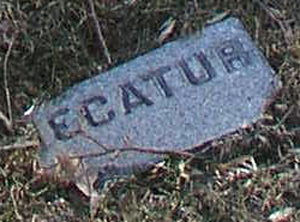
DECATUR, STEPHEN (1815-1876). Commander, United States Navy. A native of New Jersey and resident of New Hampshire at the time of his enlistment, Decatur entered the Navy at the age of 14 as a midshipman on March 17, 1829. As per his obituary in the New York Tribune, which details his Naval service, he was the grandson of Stephen Decatur who served in the American Revolution and captured English ships, and the nephew of Stephen Decatur, a naval hero of the War of 1812.
Decatur was attached to the frigate Constellation in Baltimore in 1829, the Navy Yard at Portsmouth, New Hampshire, in 1833, and the Brazil Squadron on board the Vincennes in 1834. After he was promoted to passed midshipman on July 3, 1835, he served on the receiving ship Columbus, was assigned to the West Indian squadron aboard the Levant and then served as acting master of the Constellation for several months in 1838. He was then acting lieutenant of the Vandalia and later acting lieutenant and master on the Natchez. Decatur was promoted to lieutenant on February 25, 1840, and served in the West Indian Squadron; circa 1850, he had trouble with his eyes and was sent to the Naval Hospital. From 1850 through 1854, he was on the sloop Saratoga in the East India Squadron and then was assigned to the New York, a receiving-ship, in 1855. Decatur was placed on the reserved list on September 13, 1855, and made commander (reserved list) on July 29, 1861, and was waiting orders from 1864-66.
After the Civil War, he was promoted to captain (reserved list) on April 4, 1867, and retired as commodore on December 30, 1869. He last lived in Boston, Massachusetts. His death was attributed to heart disease. He was survived by his wife, Anna Philbrick Decatur and two children; two of his children died as infants and two died under age twelve. His surviving son, who bore his name, was a graduate of the Naval Academy and was in active service at the time of his father’s death. Section 22, lot 4303.